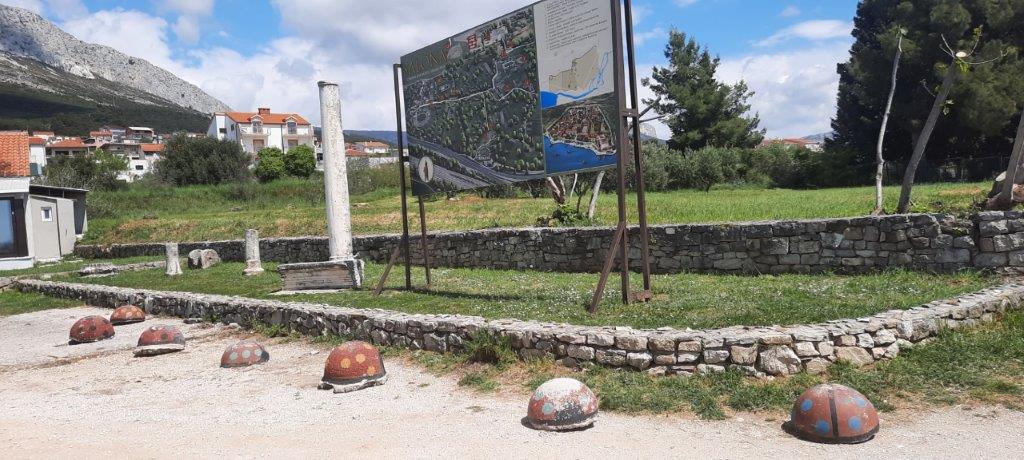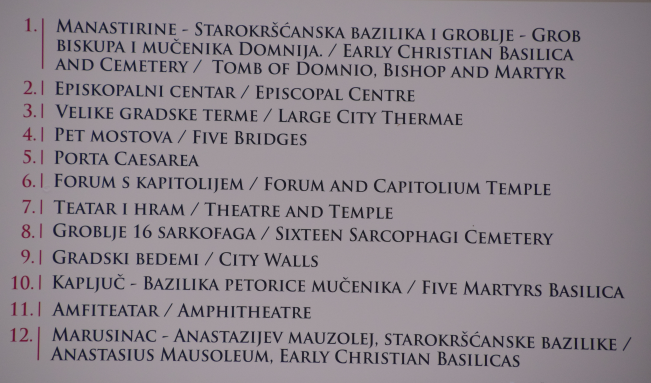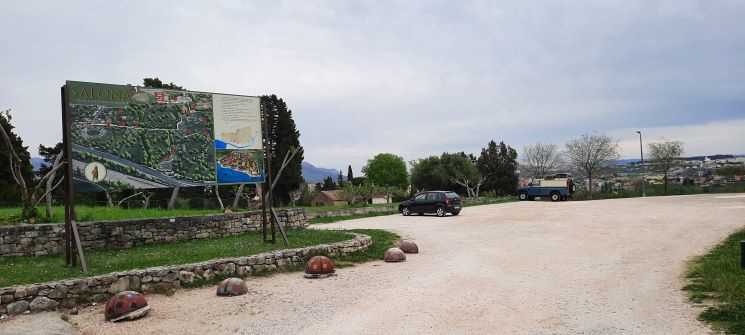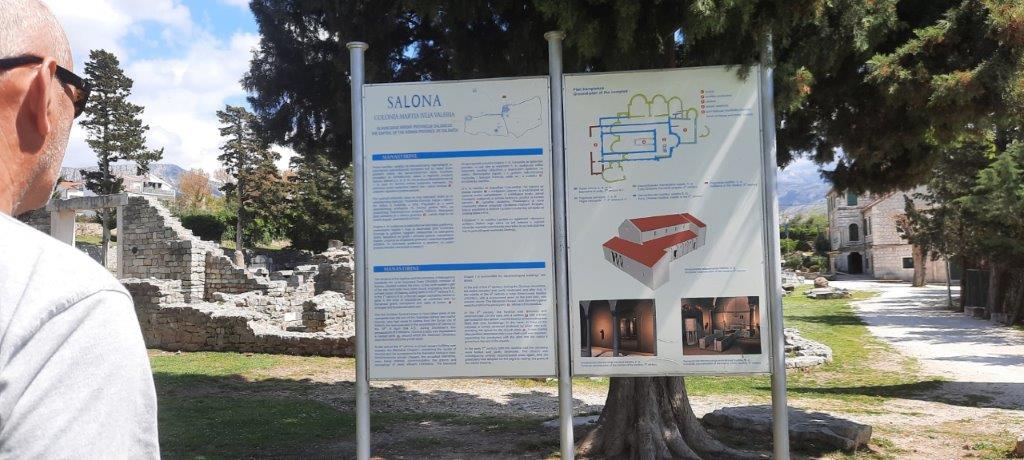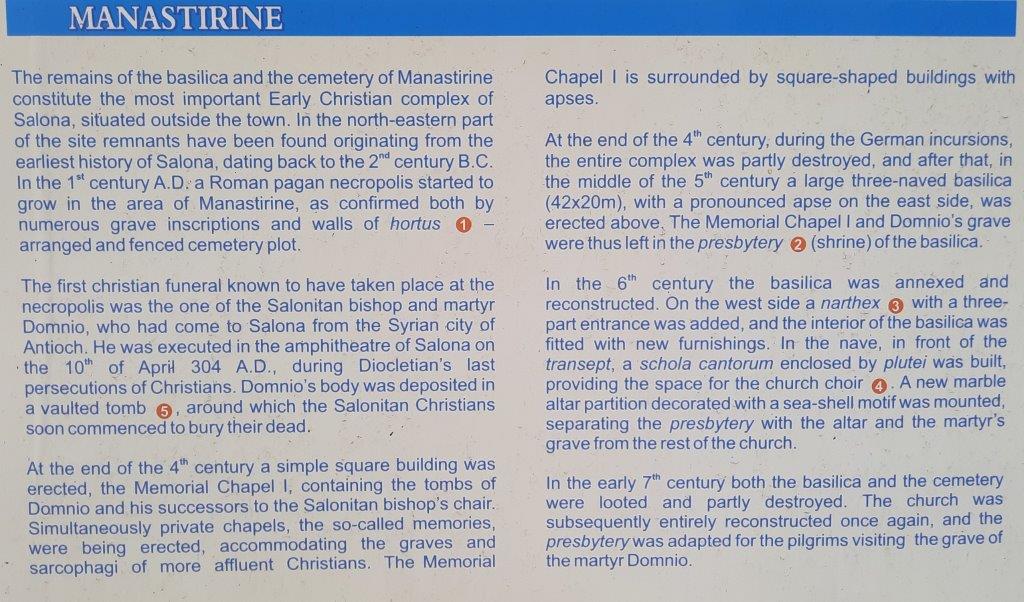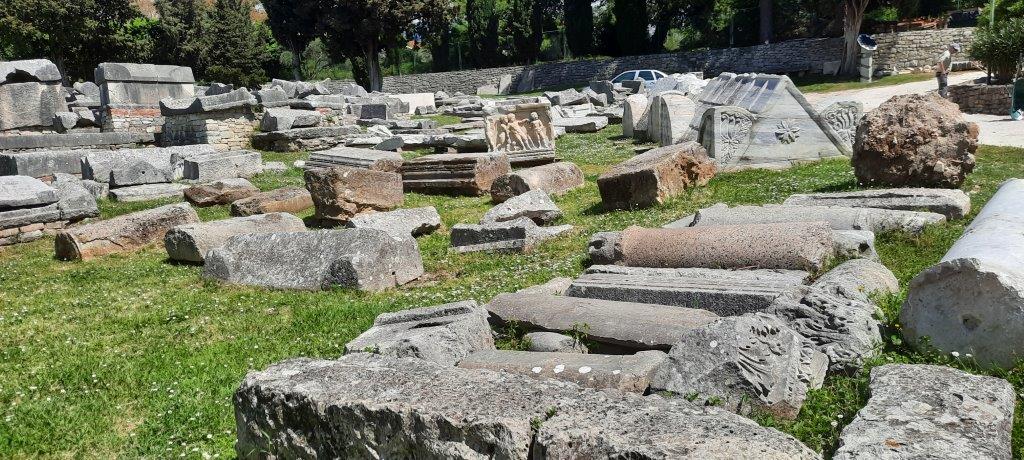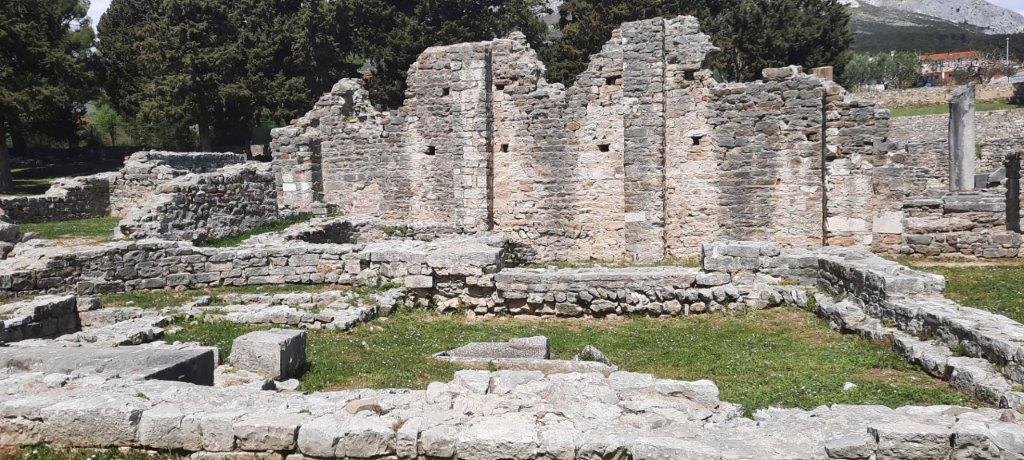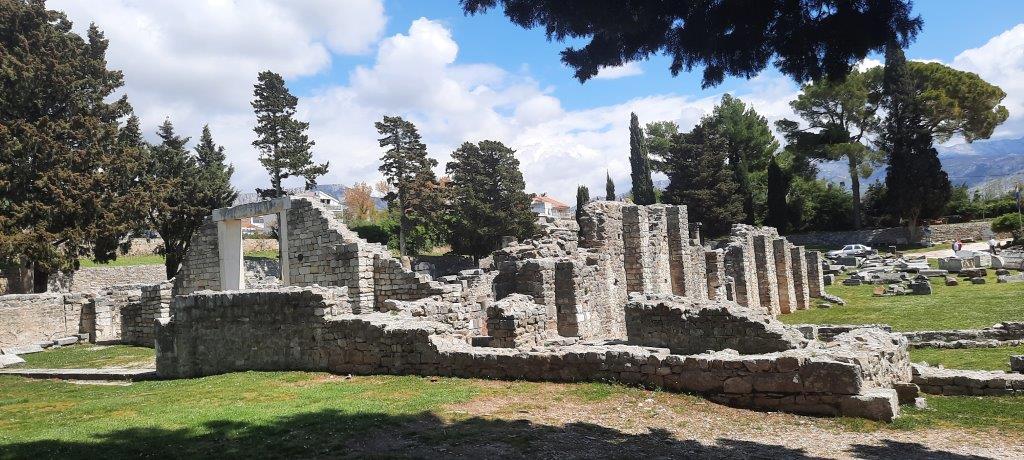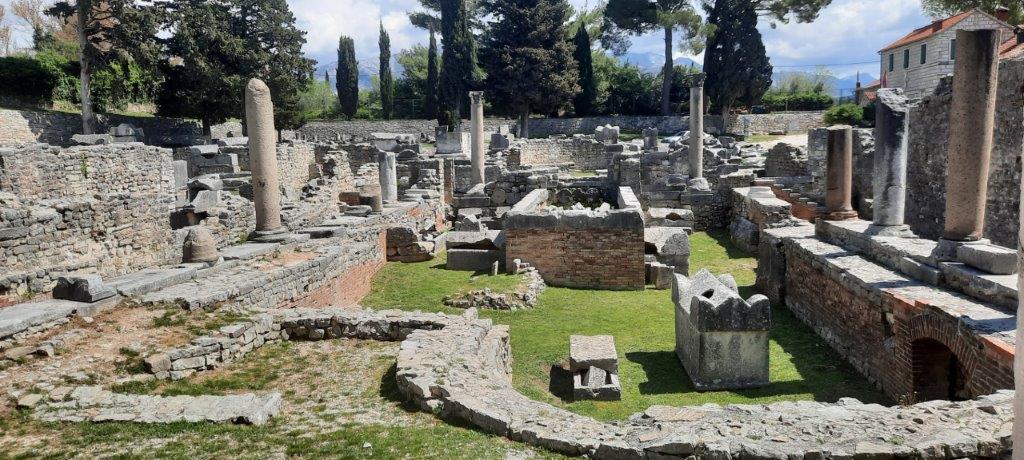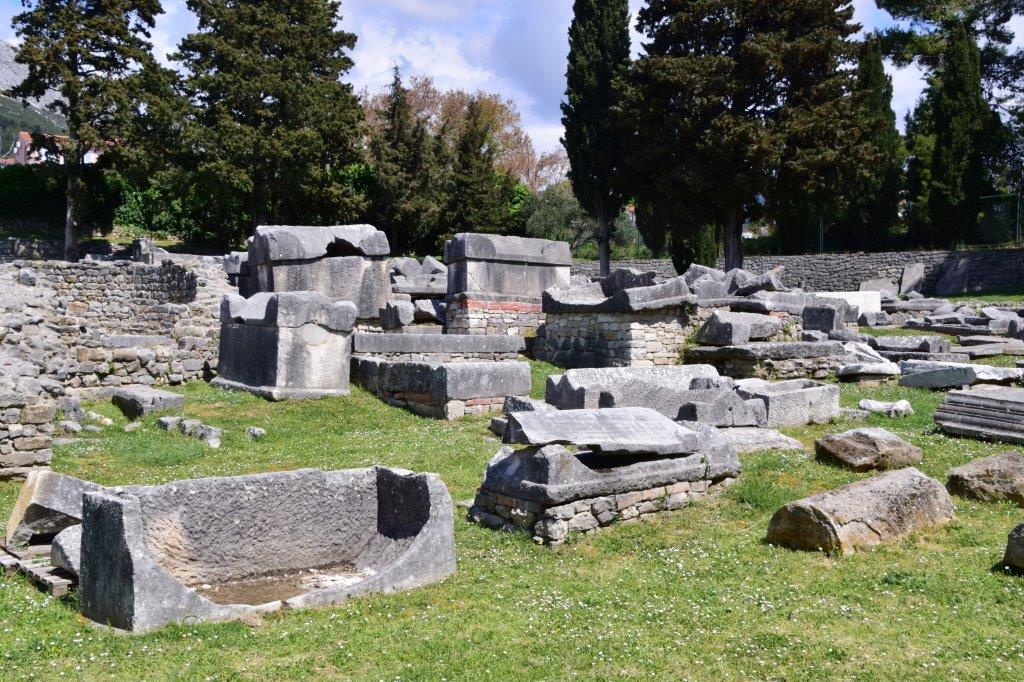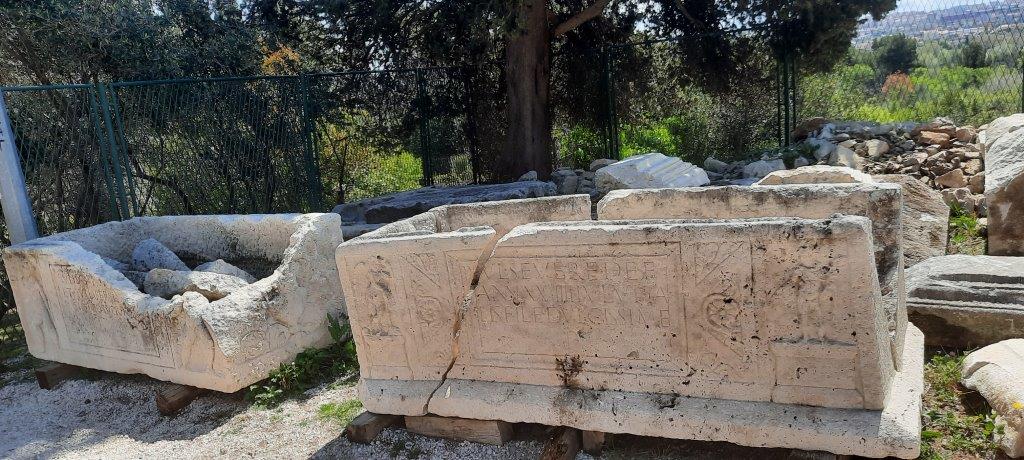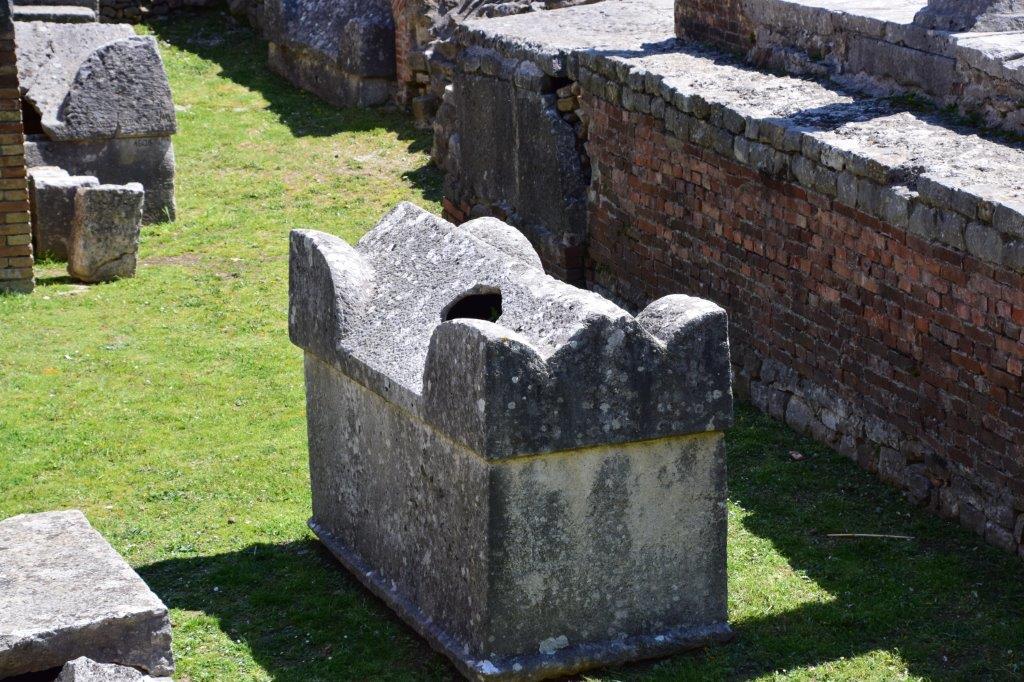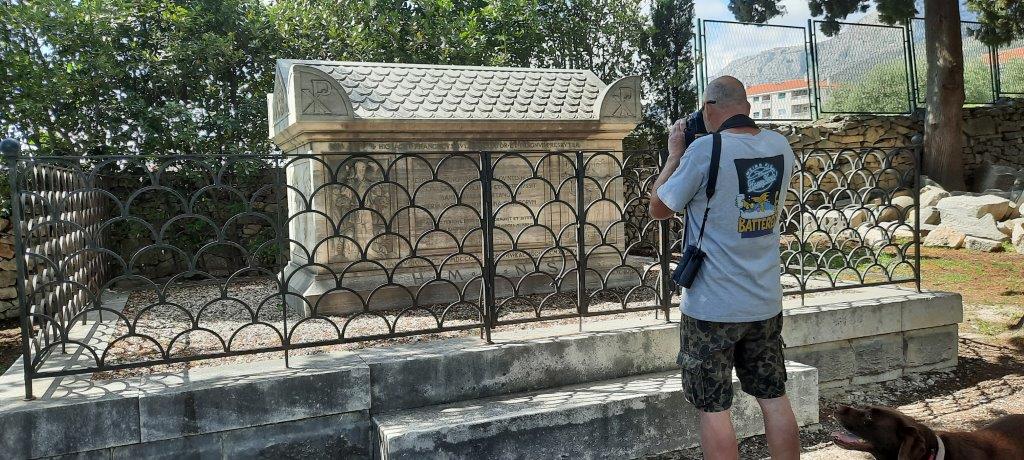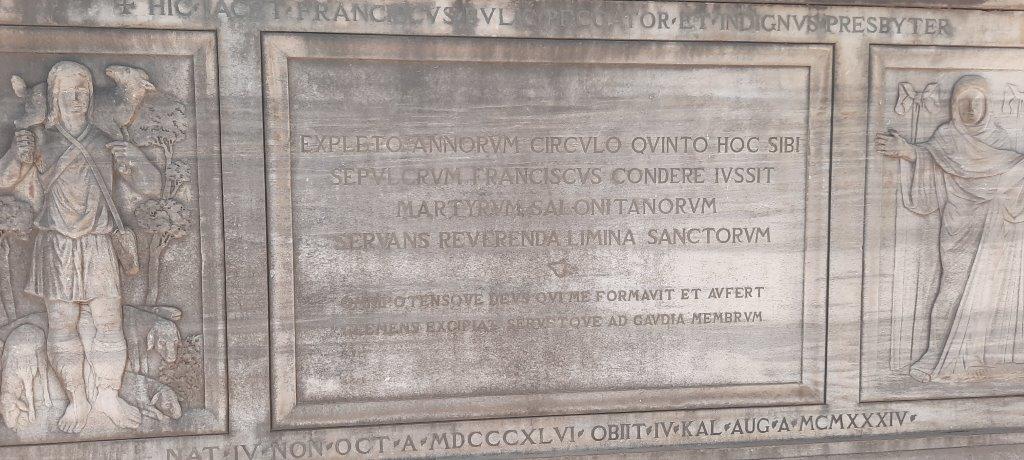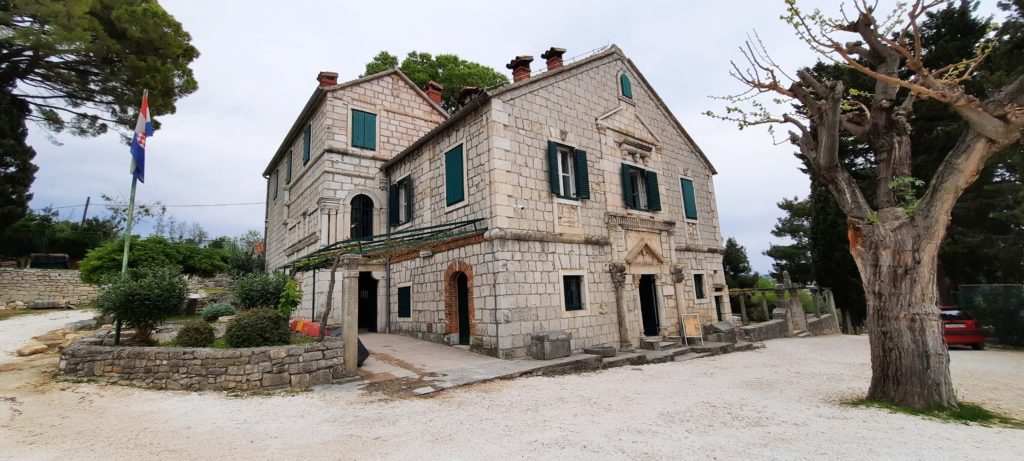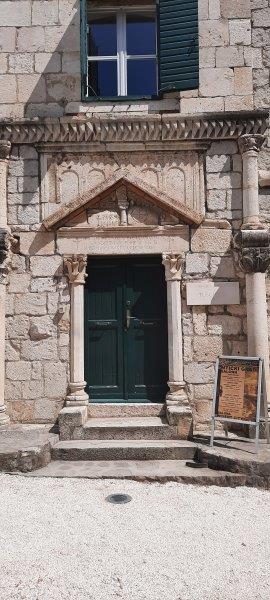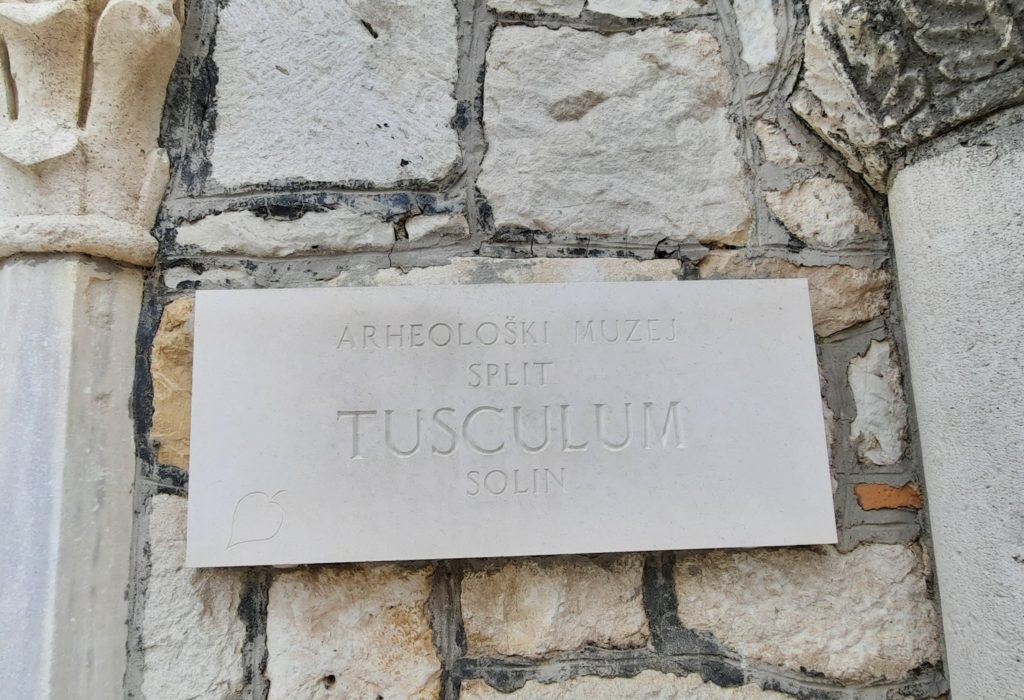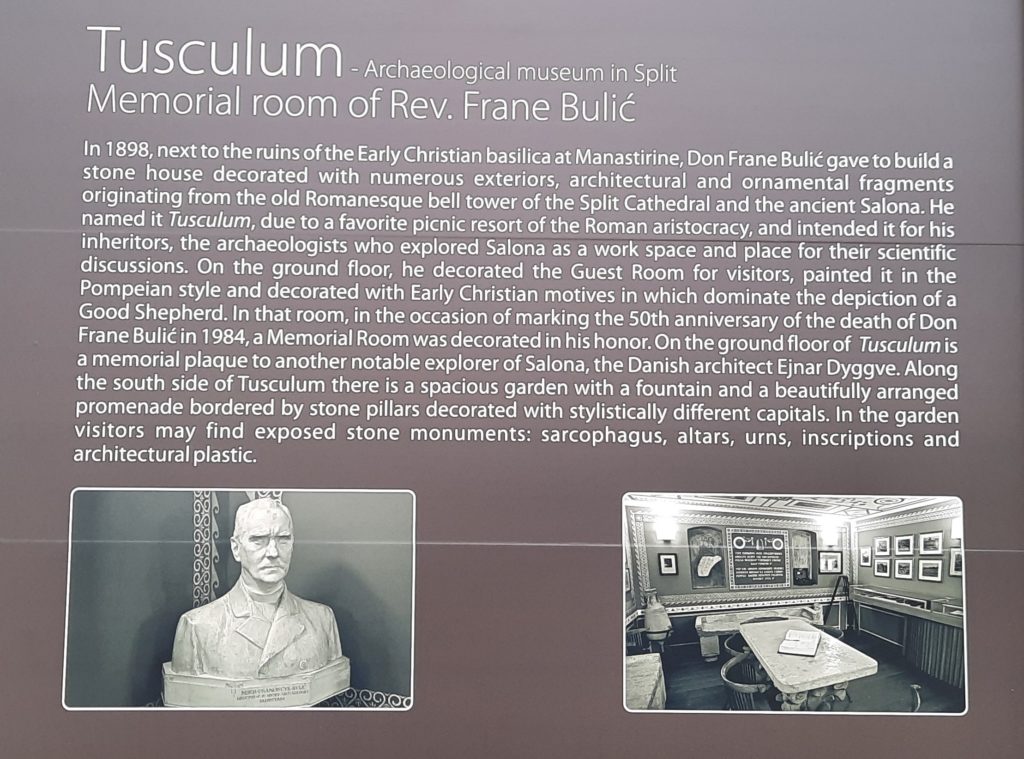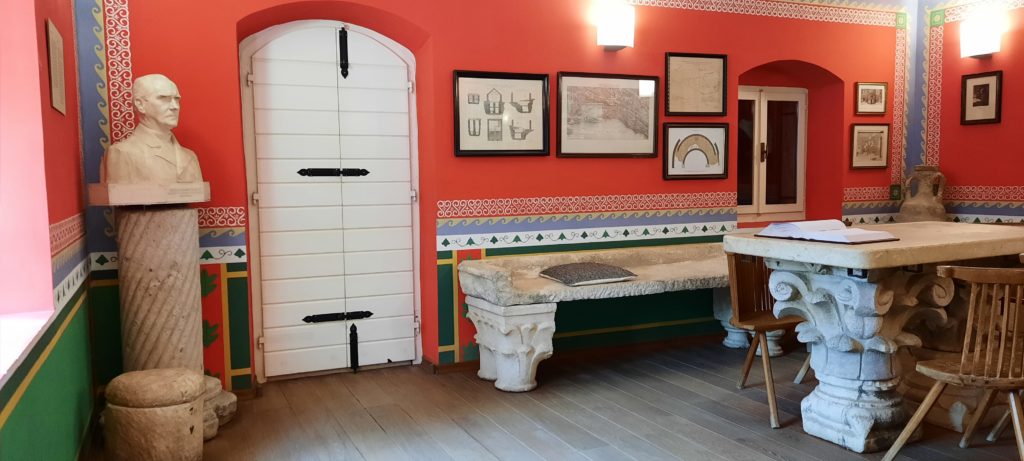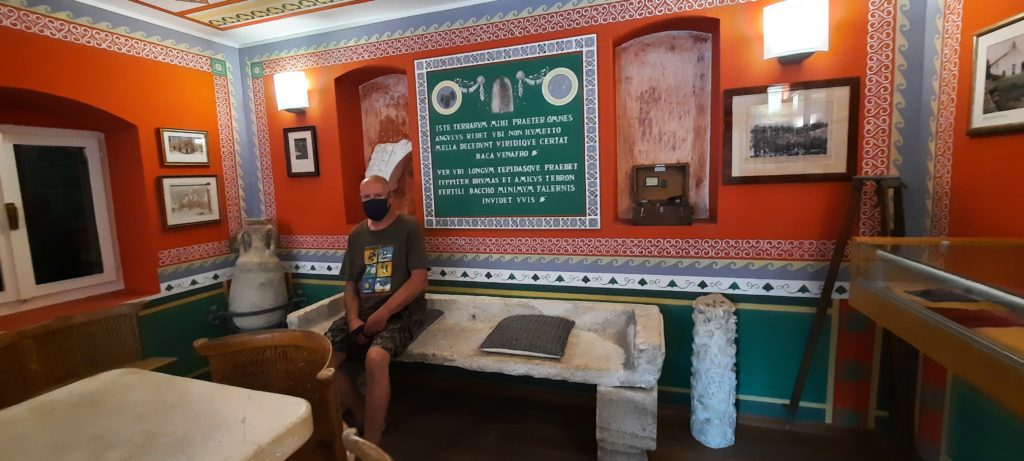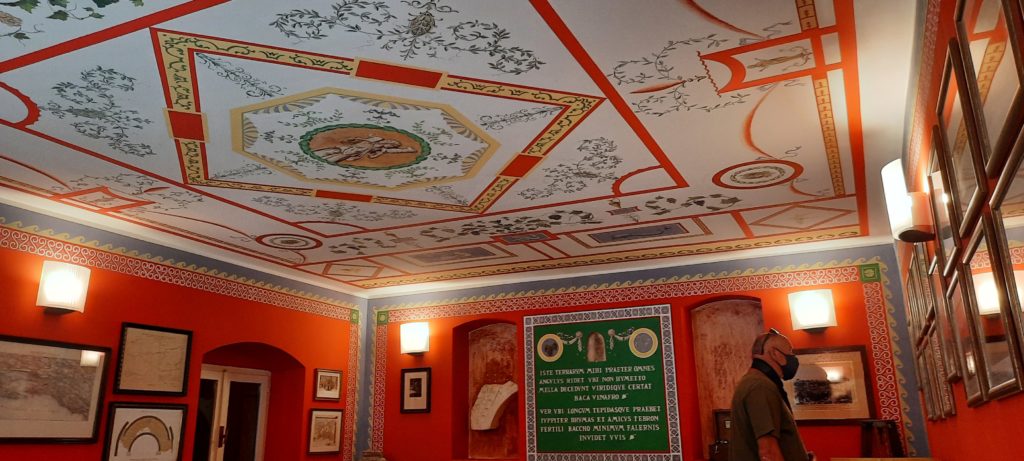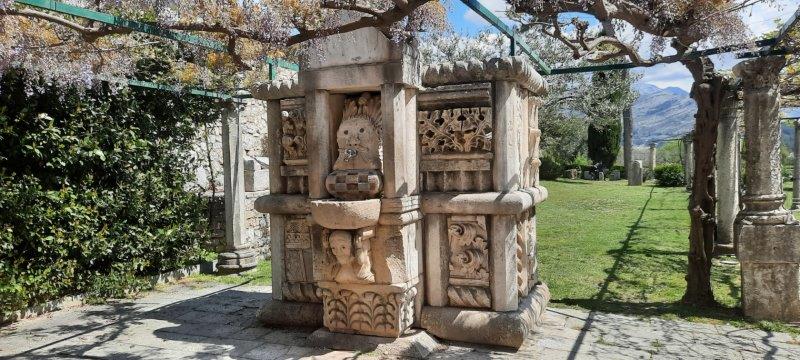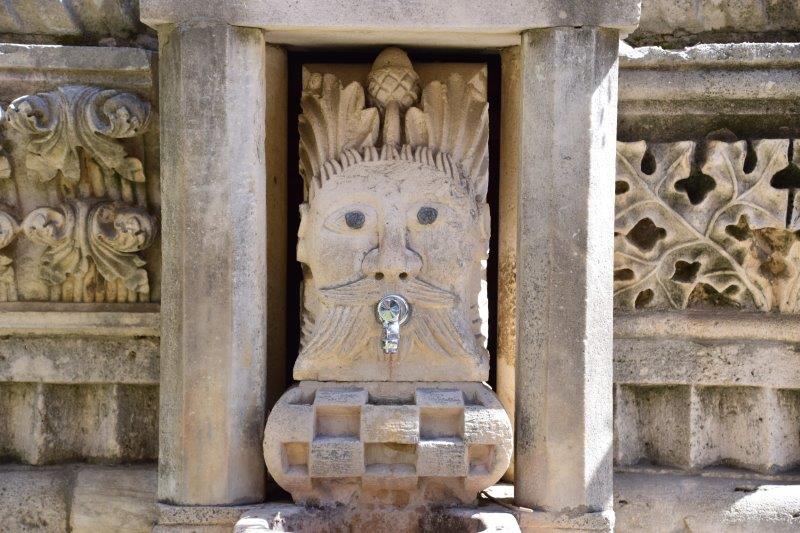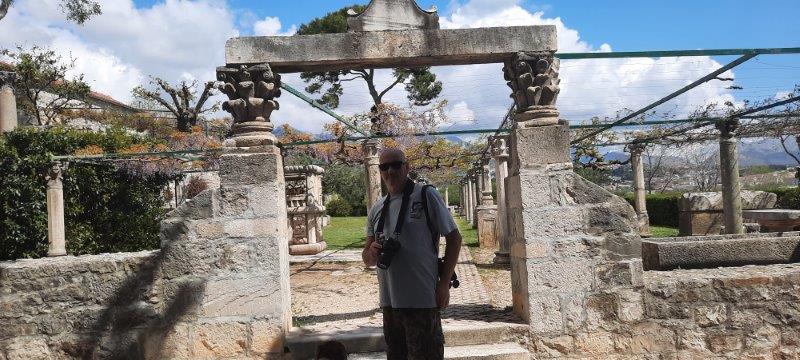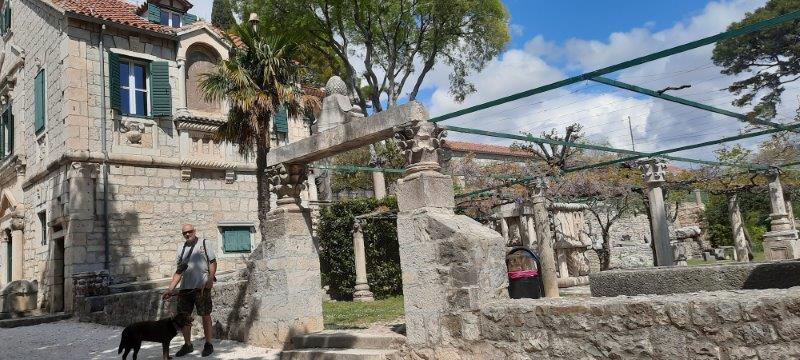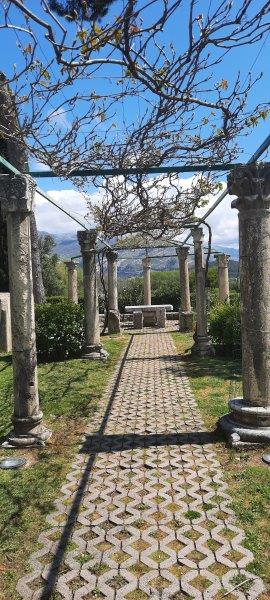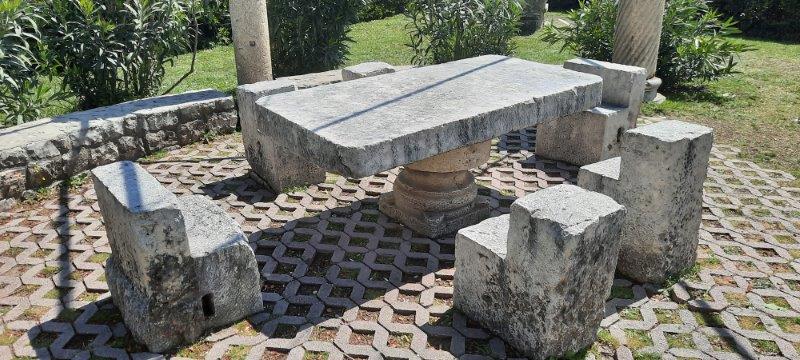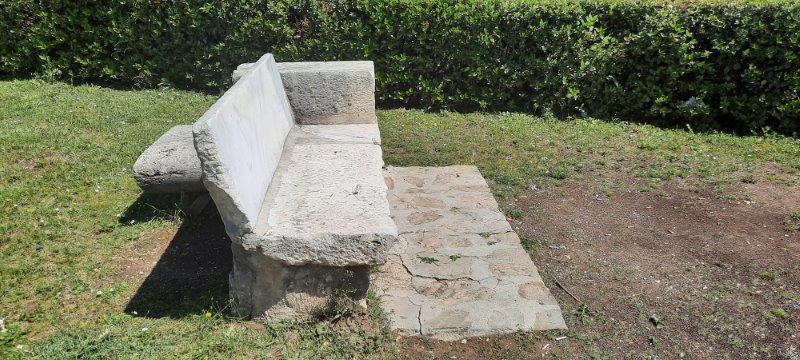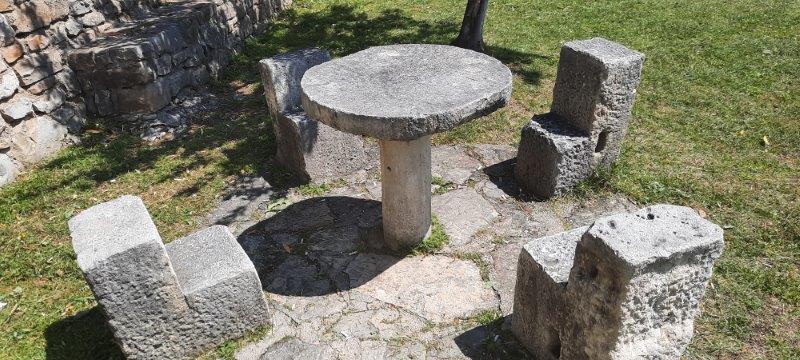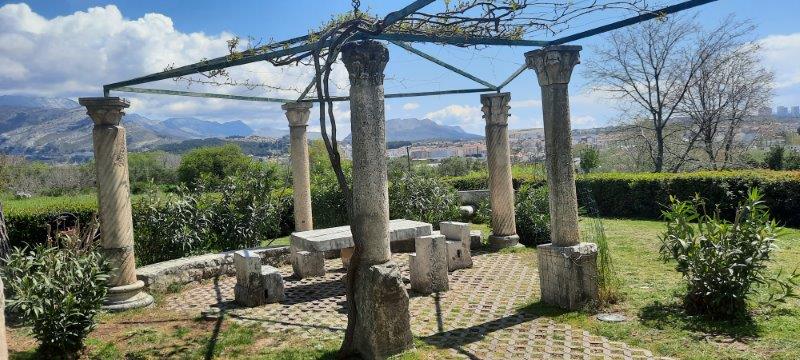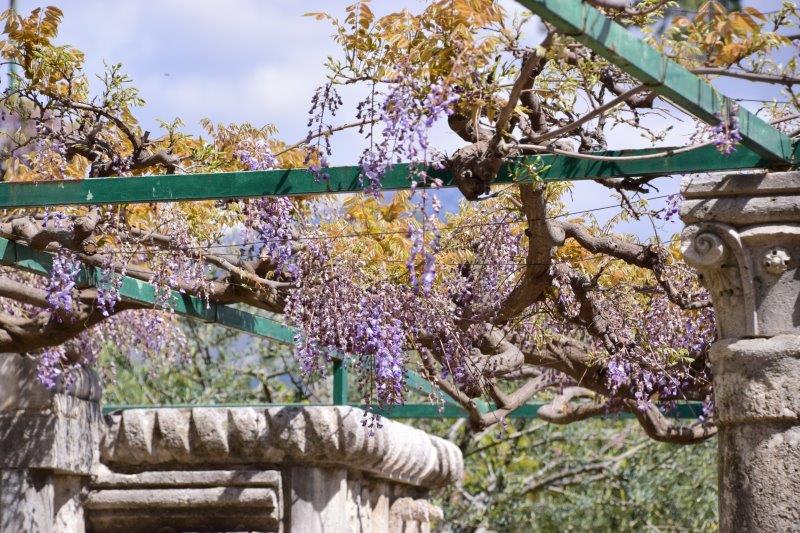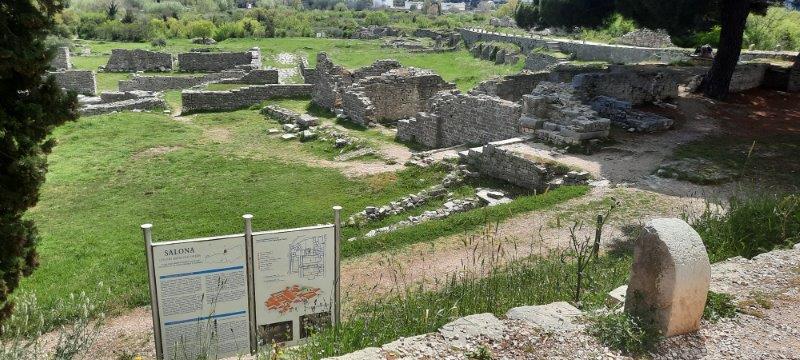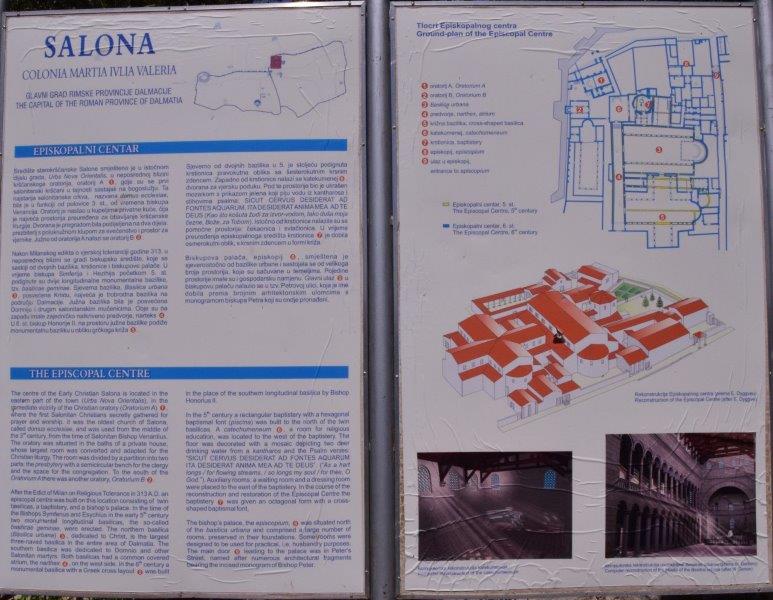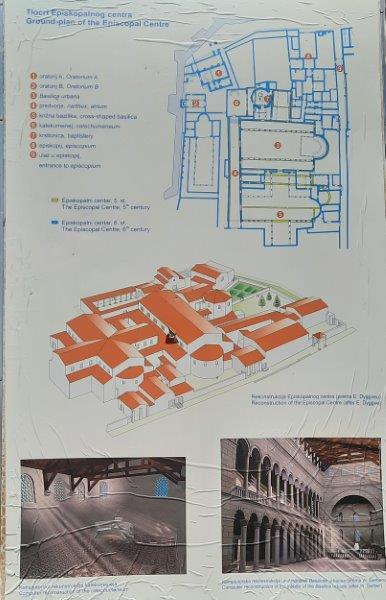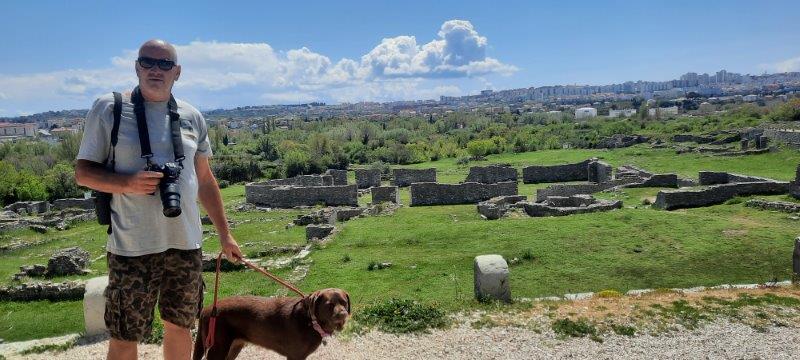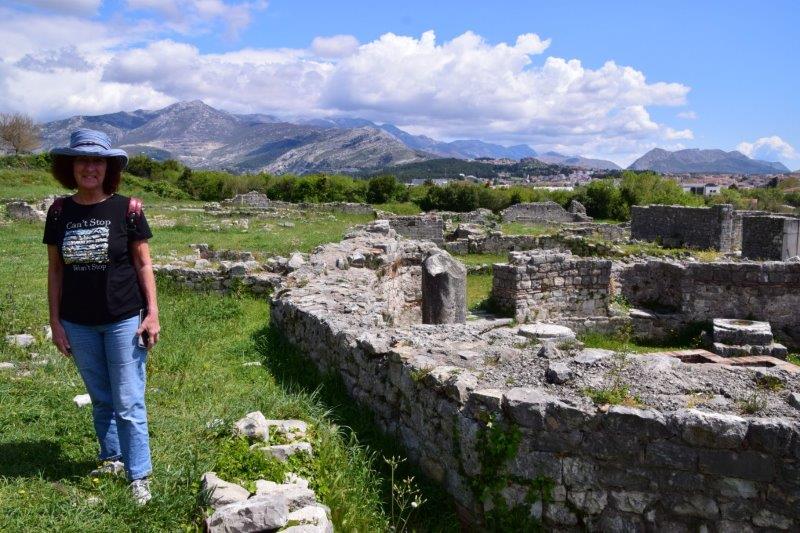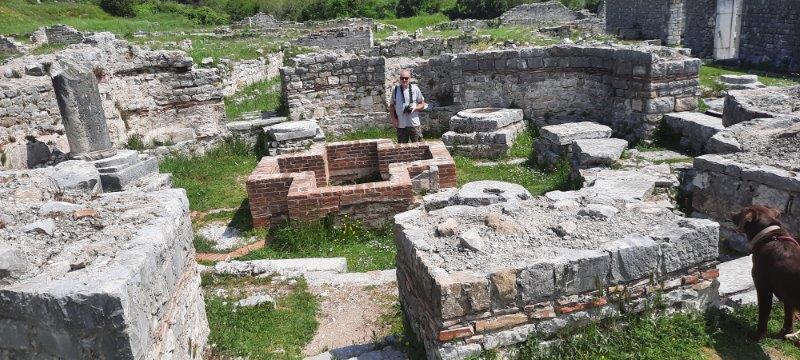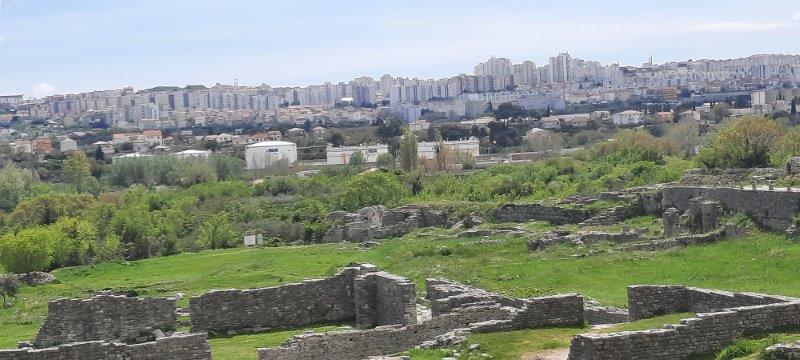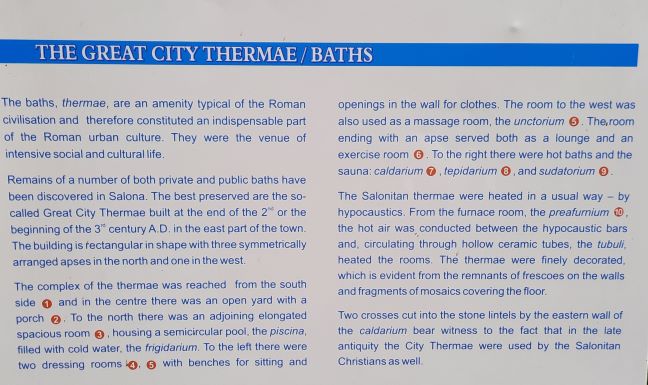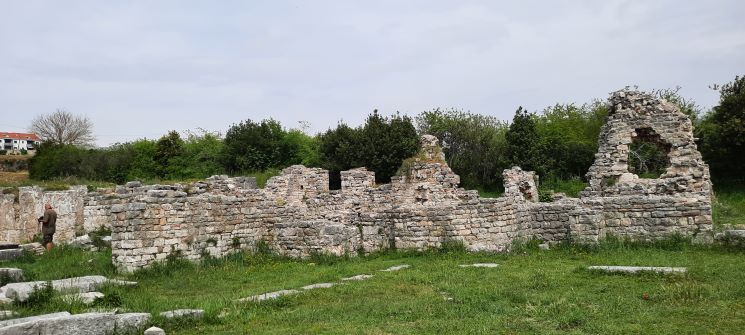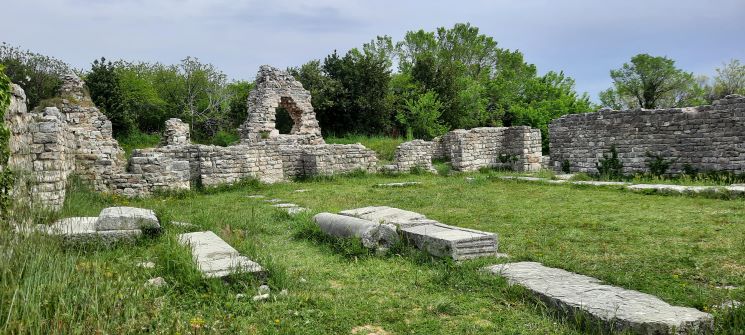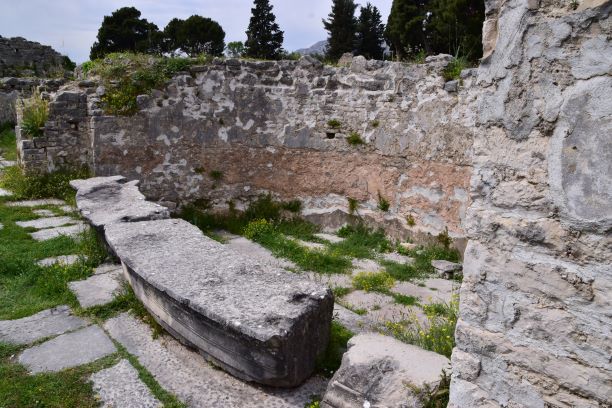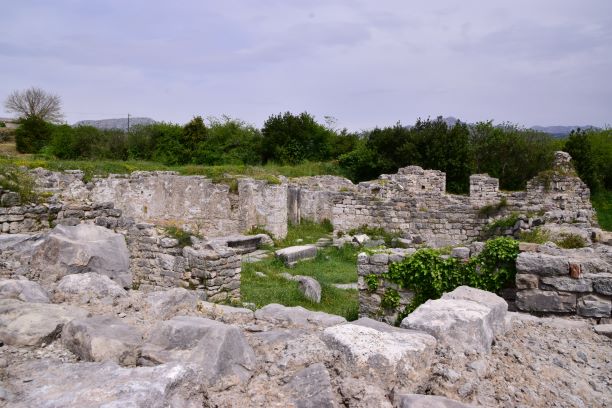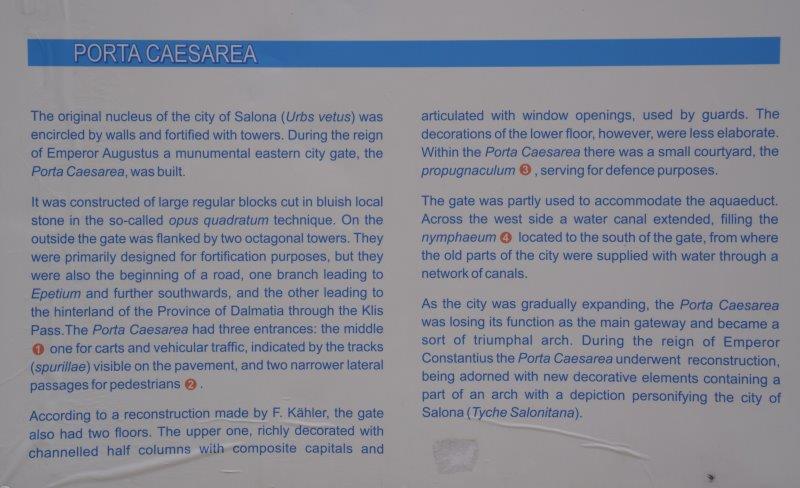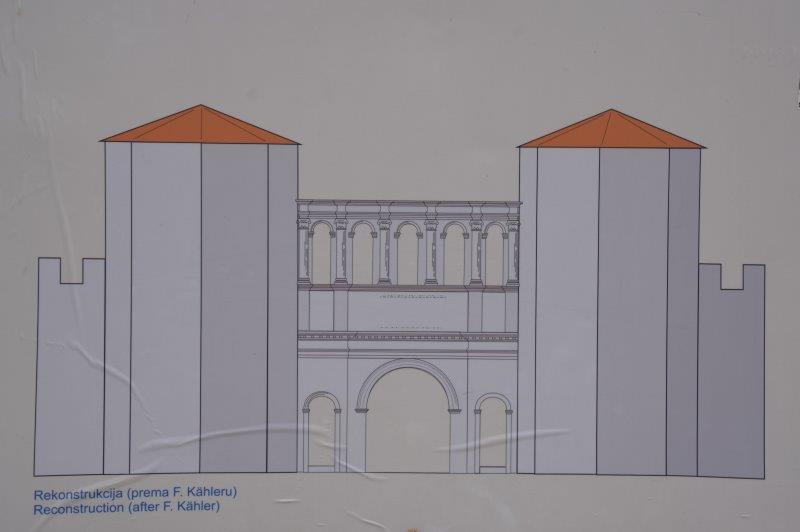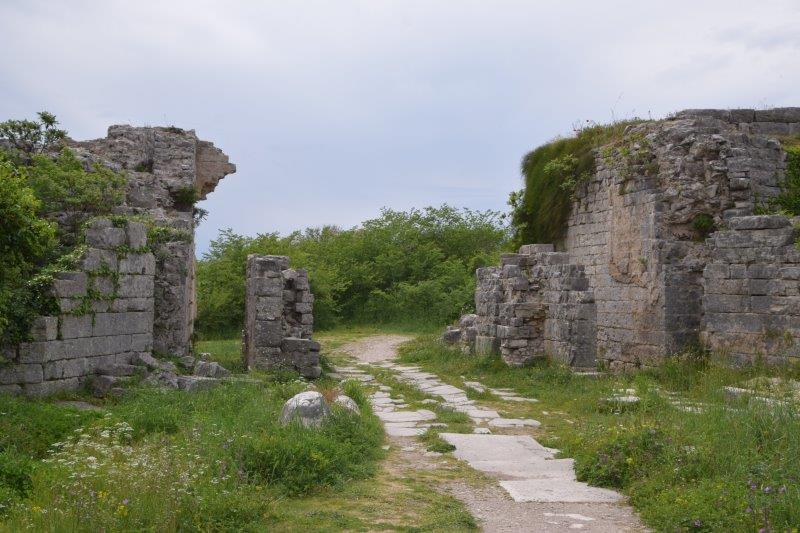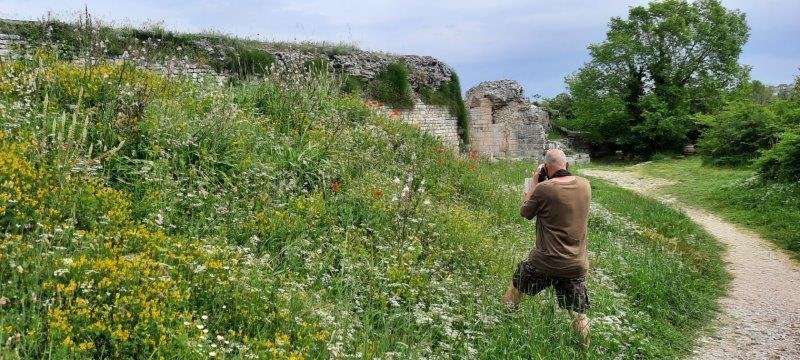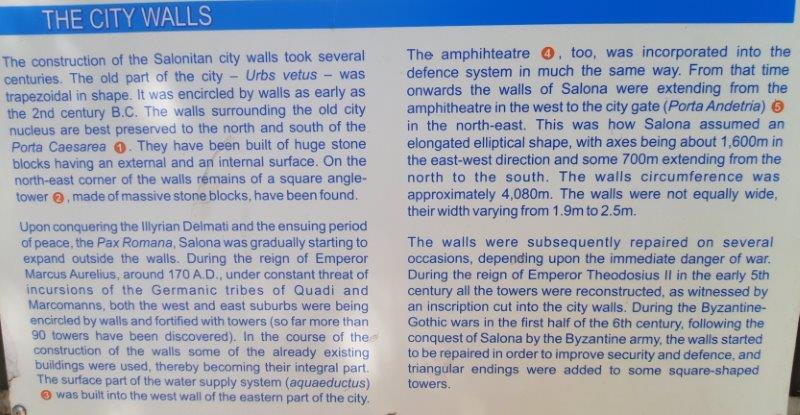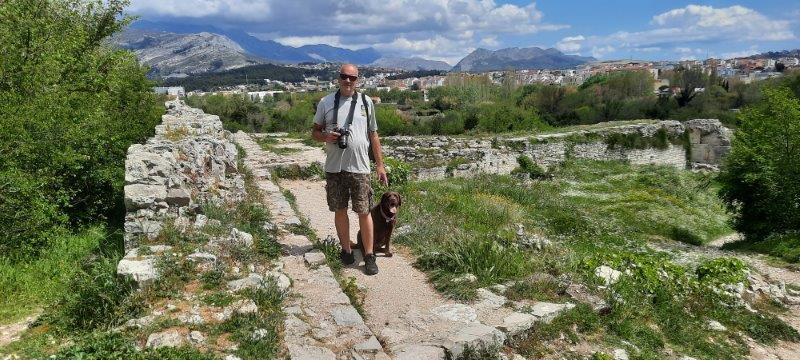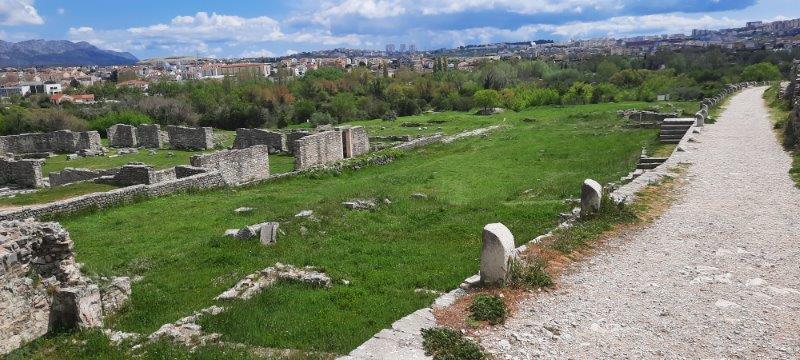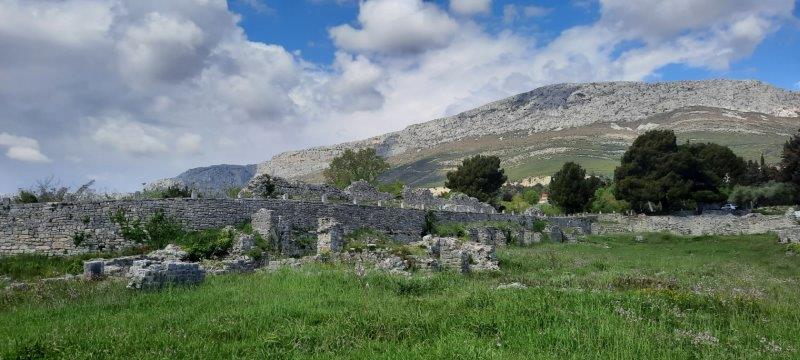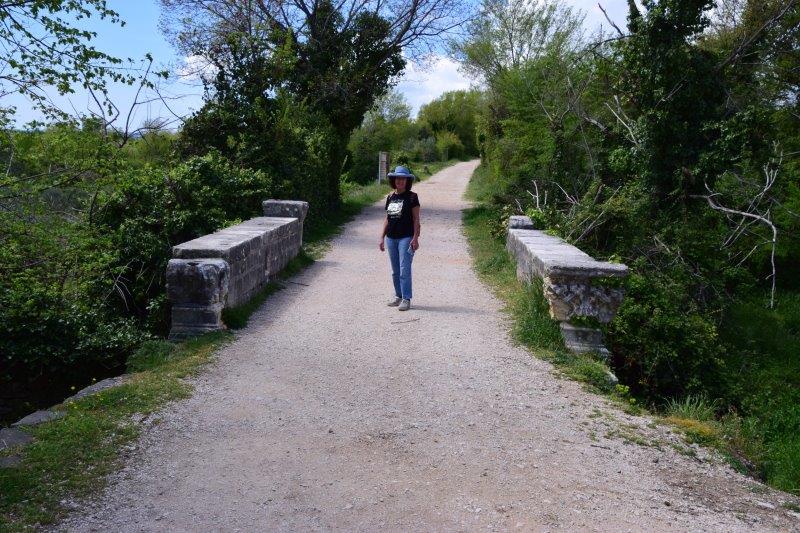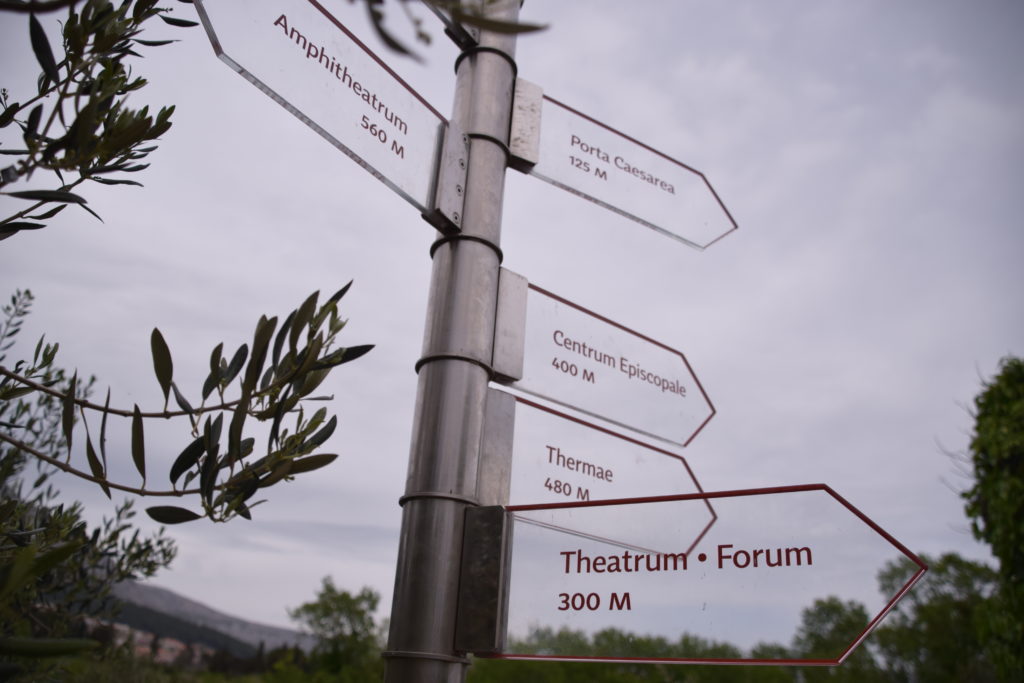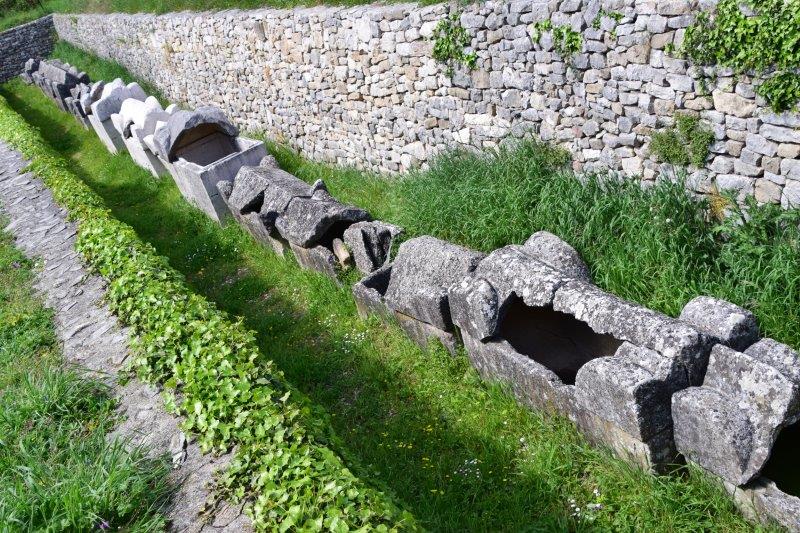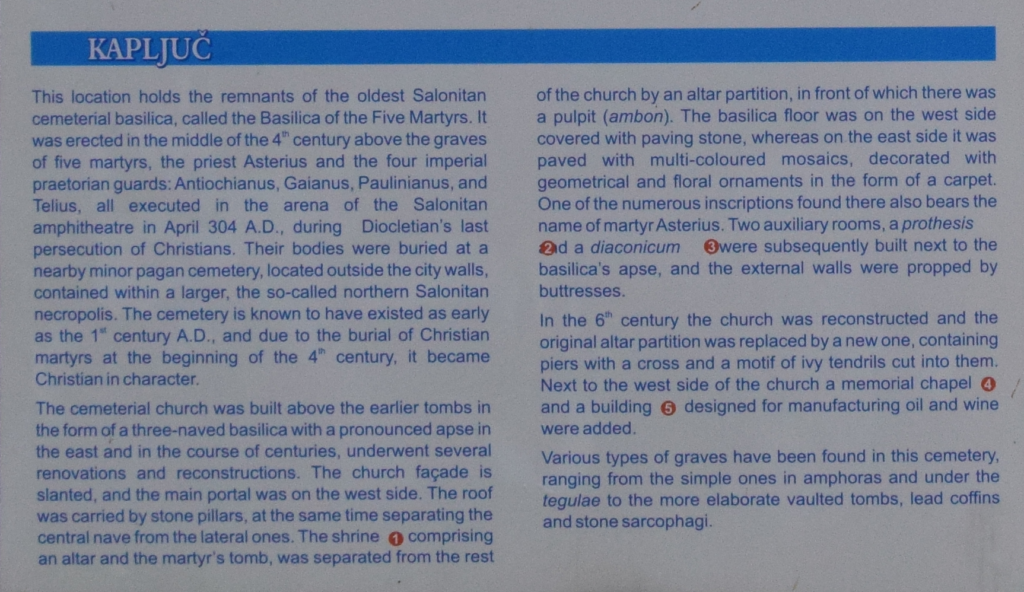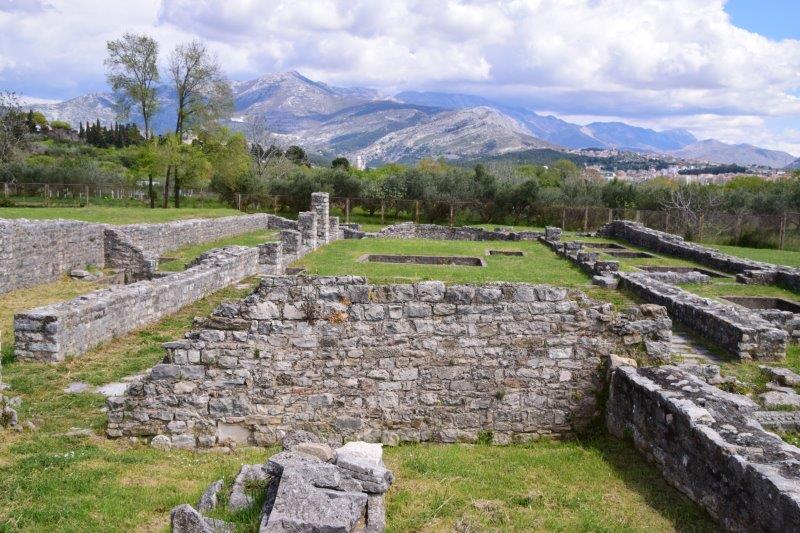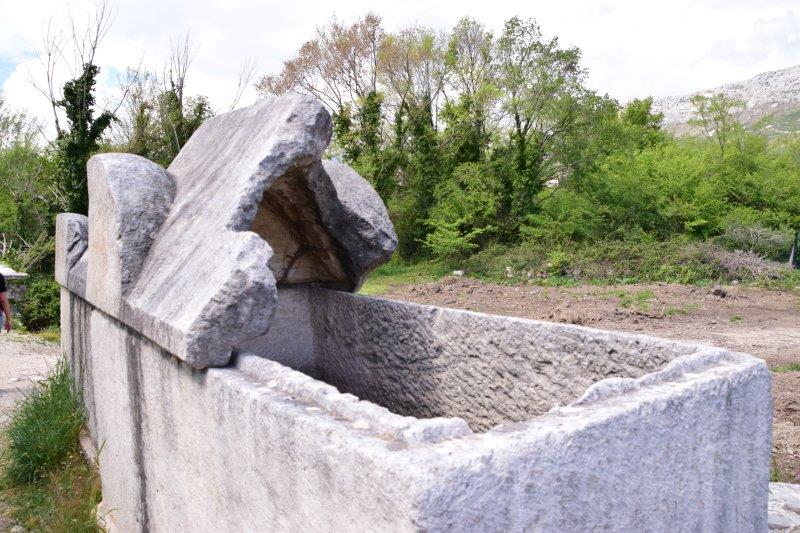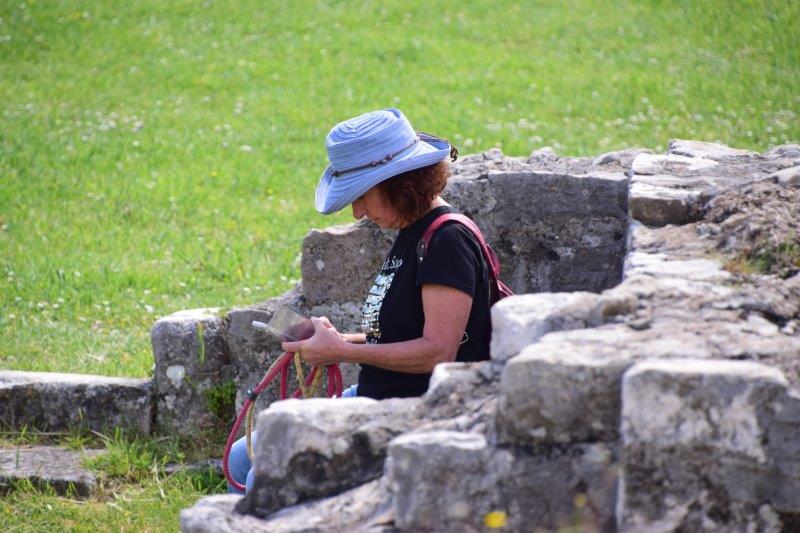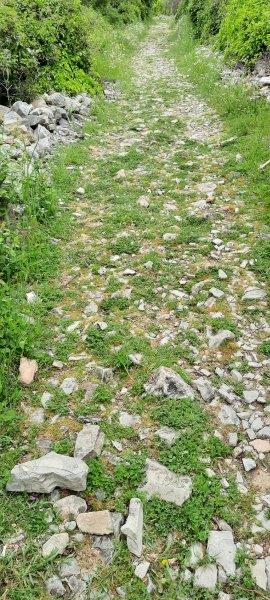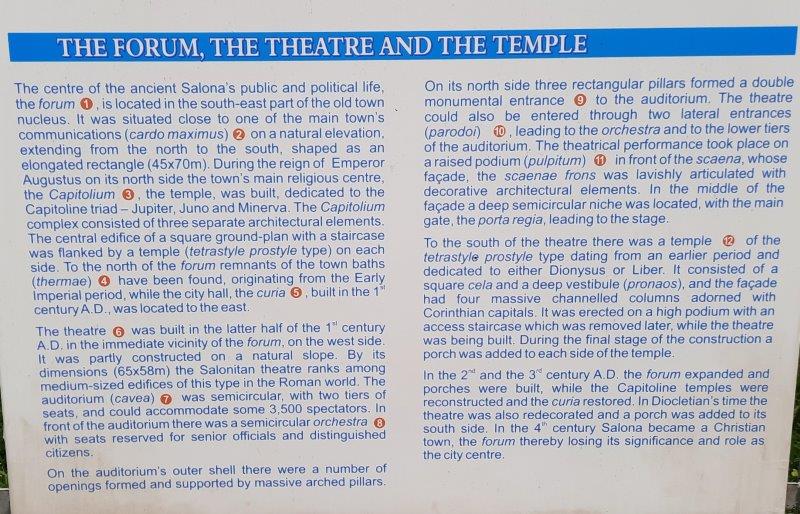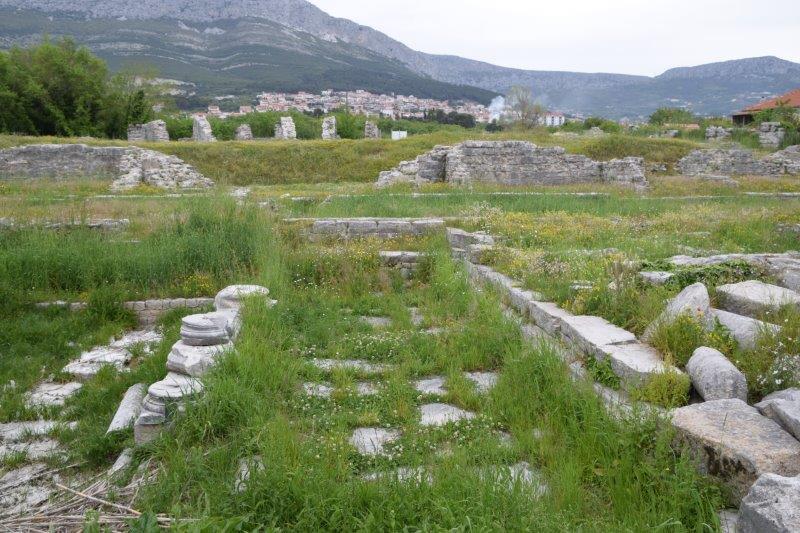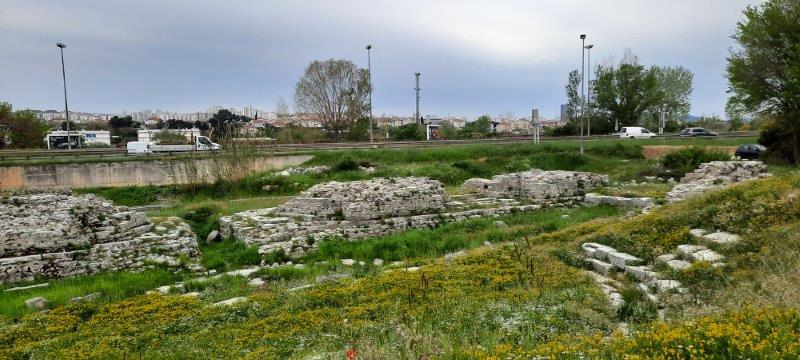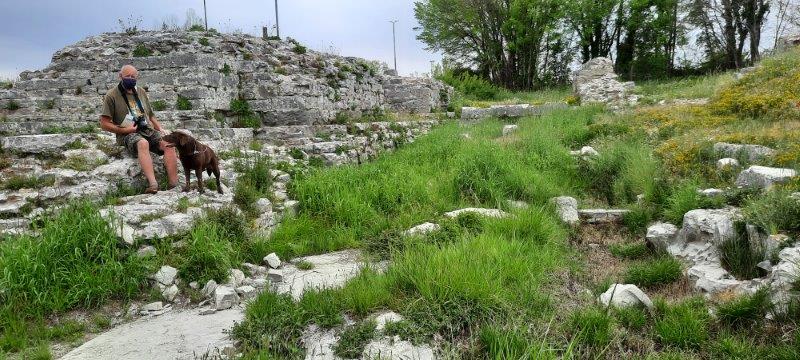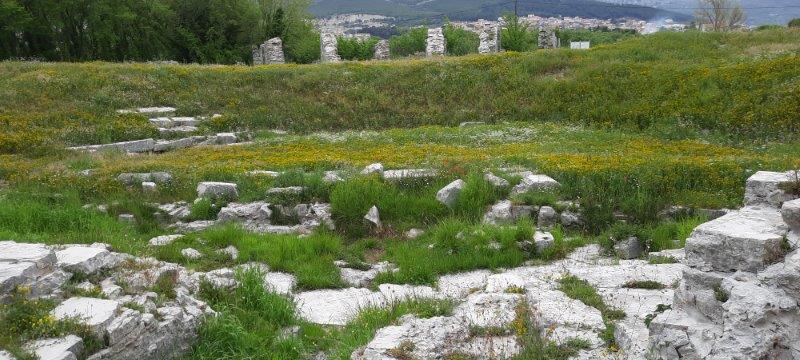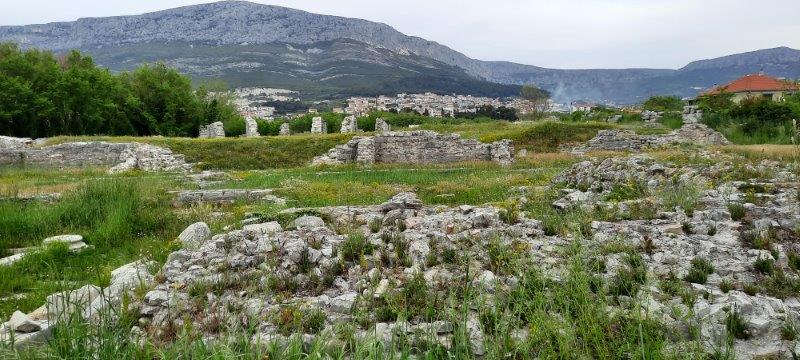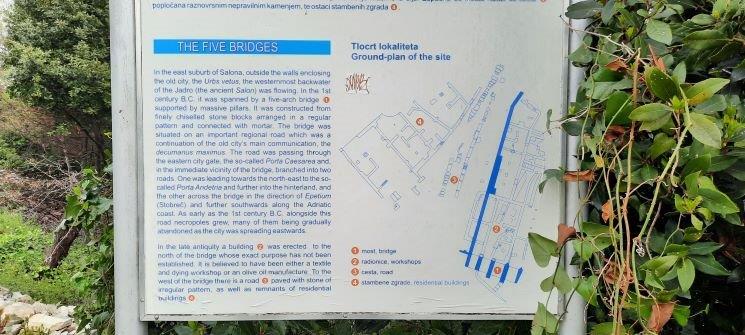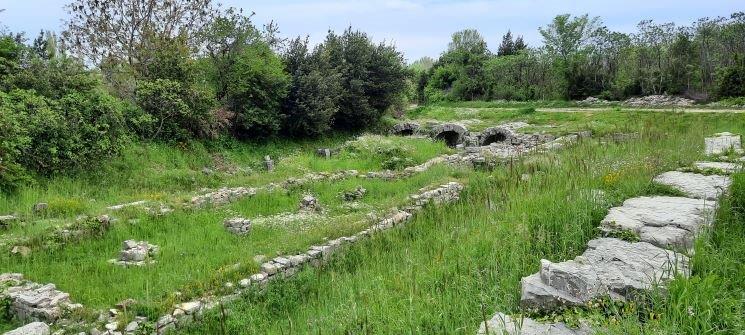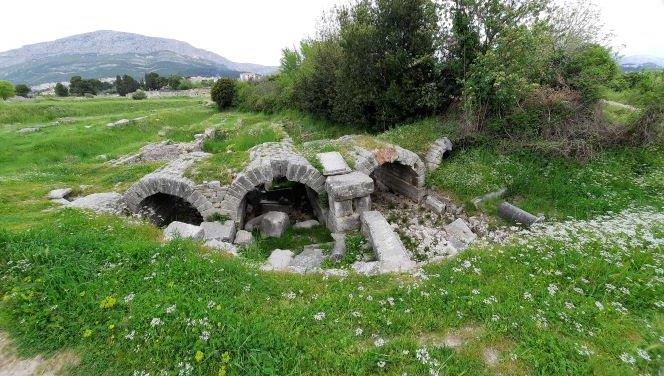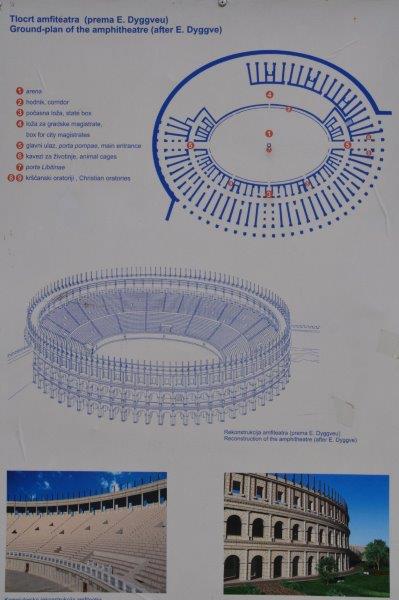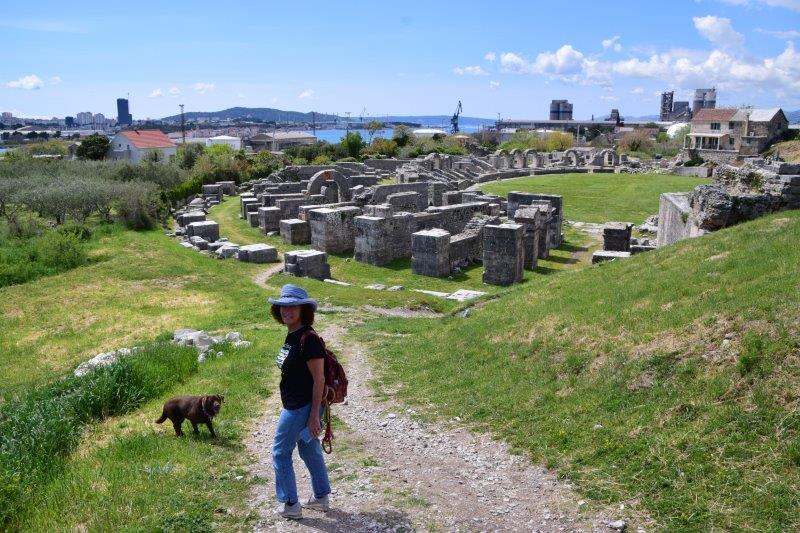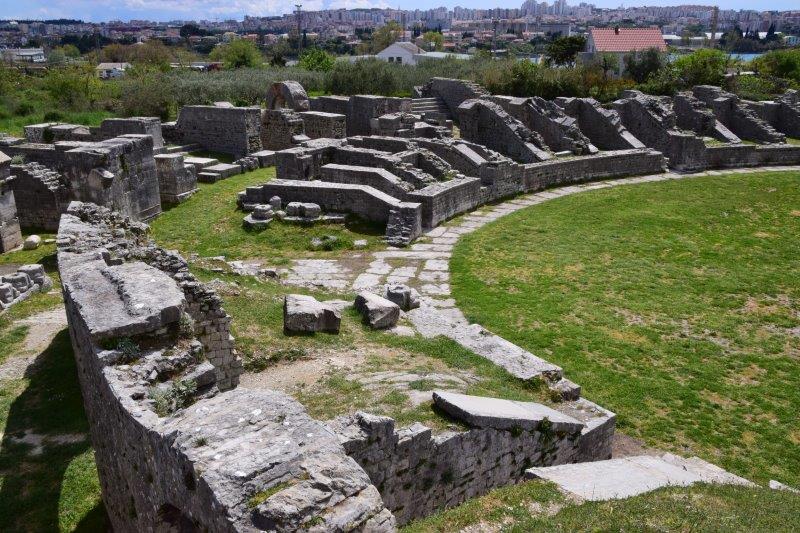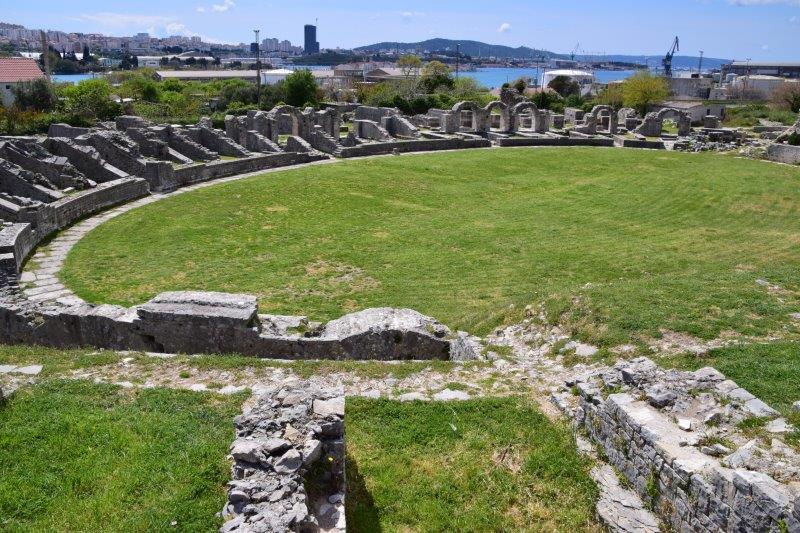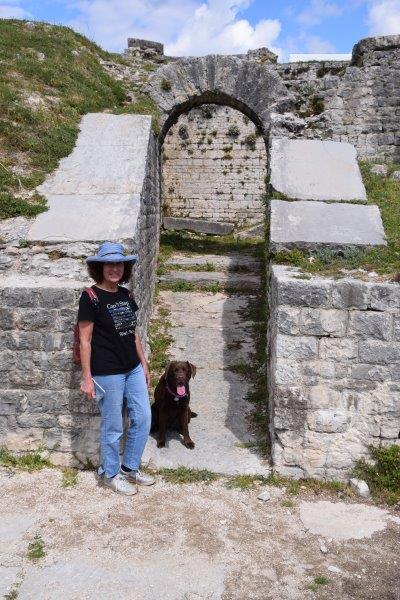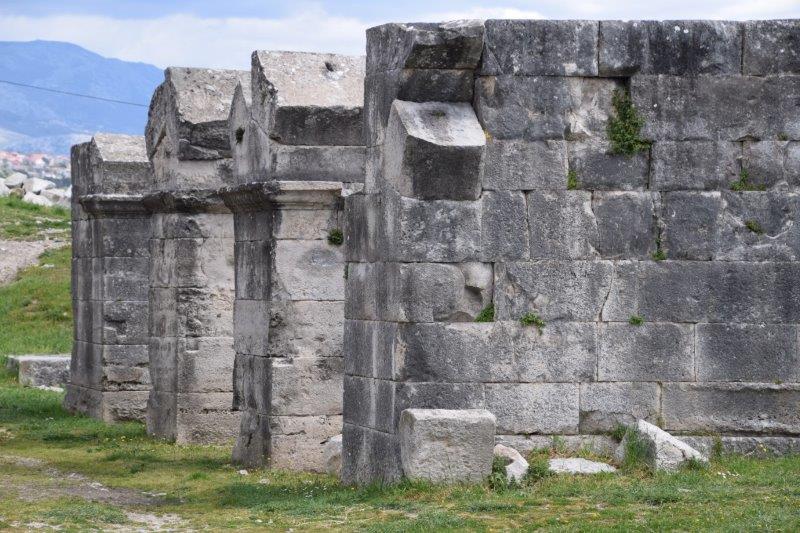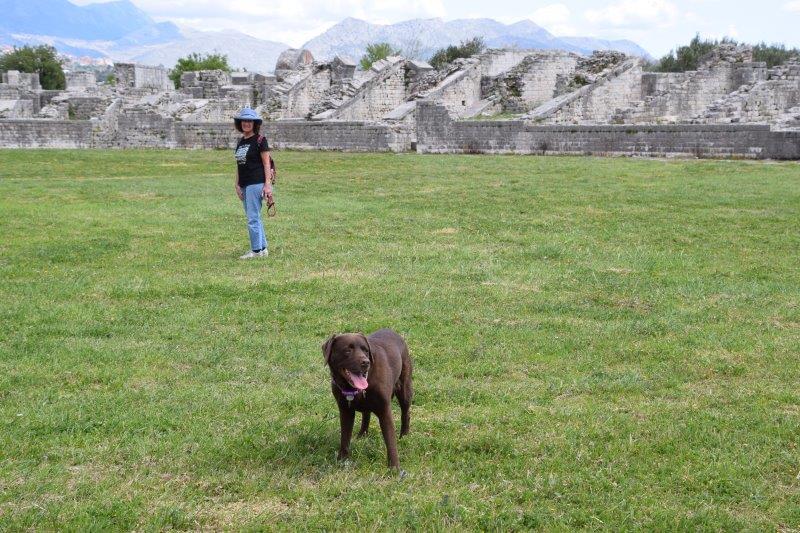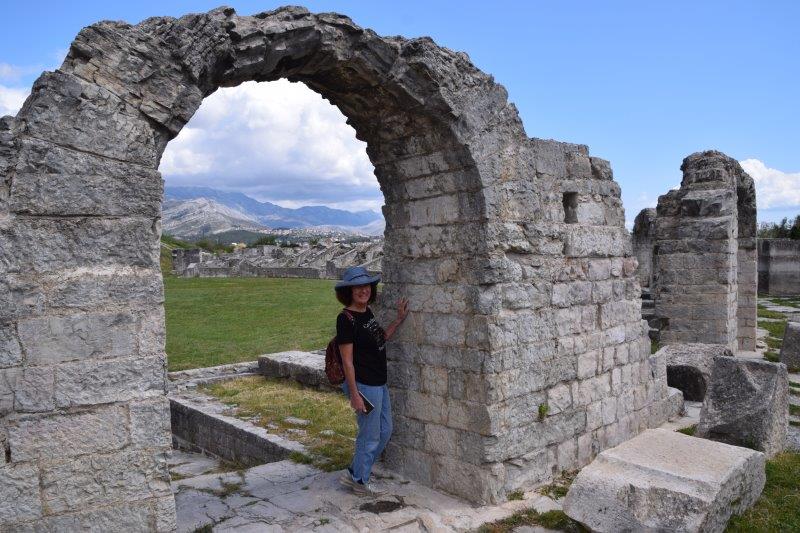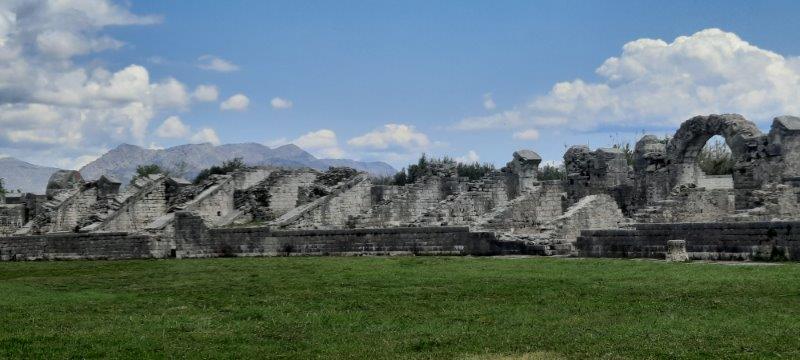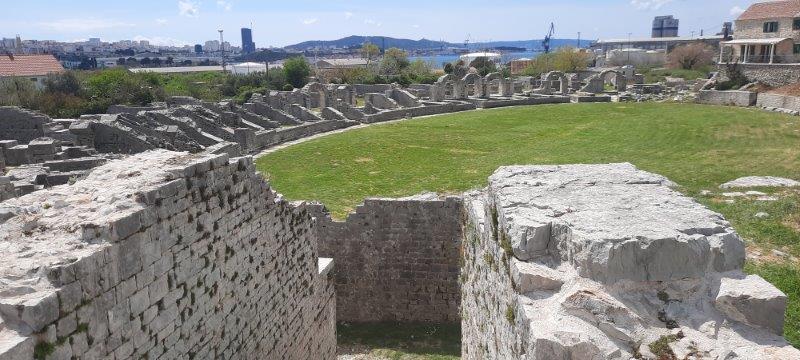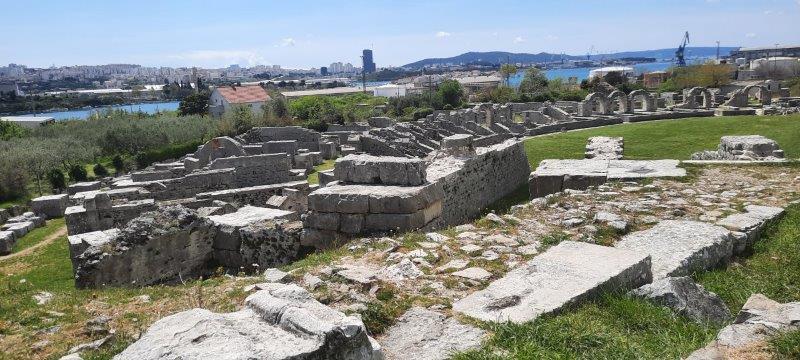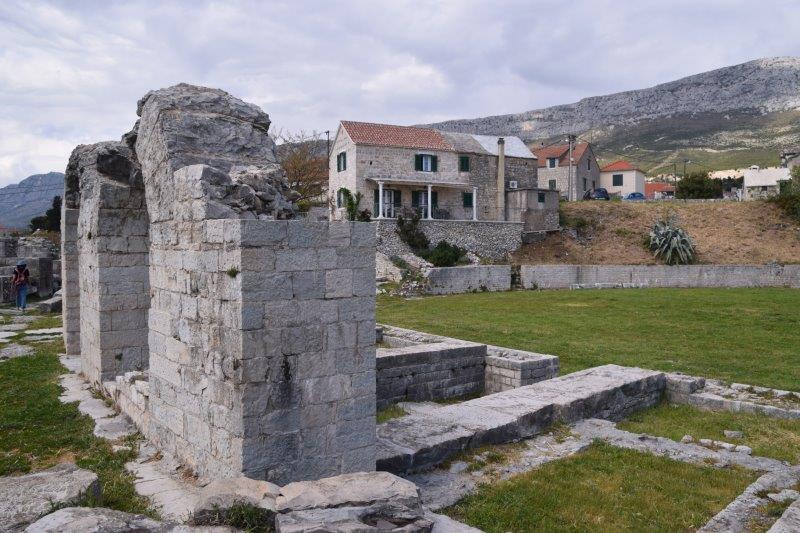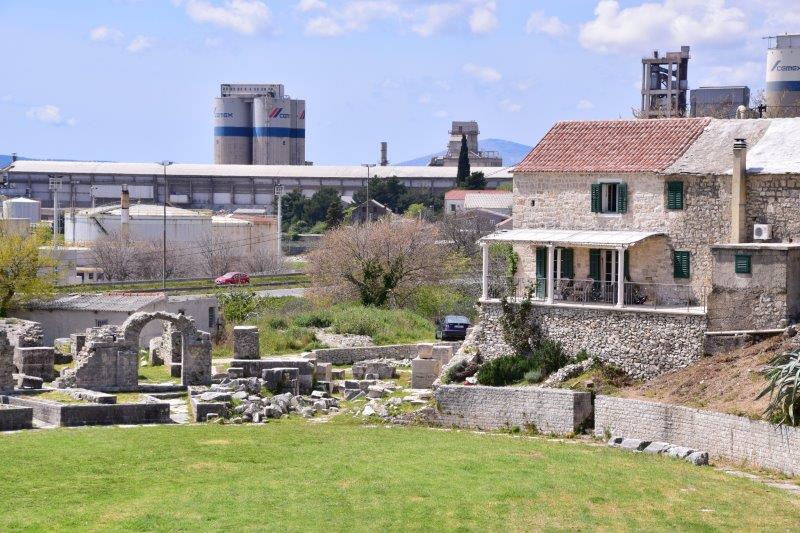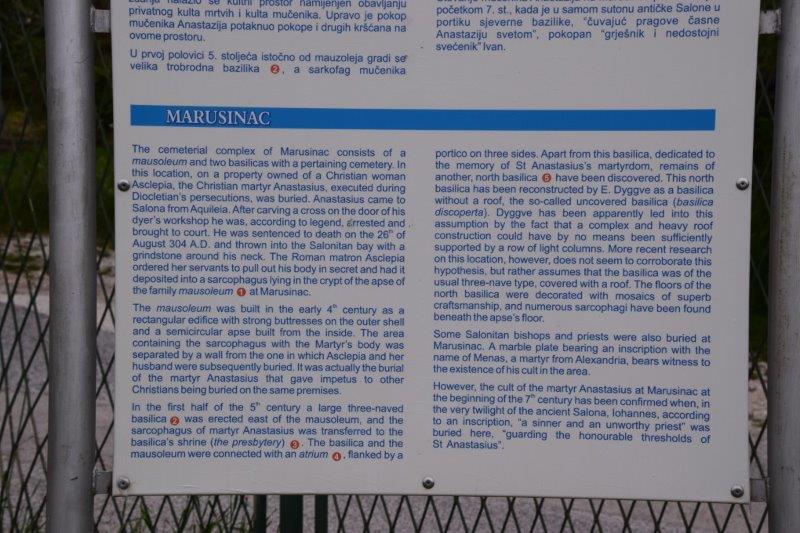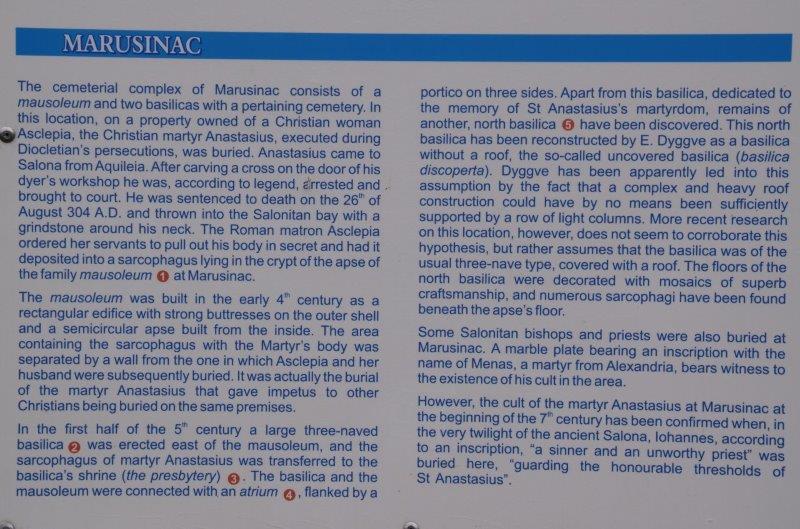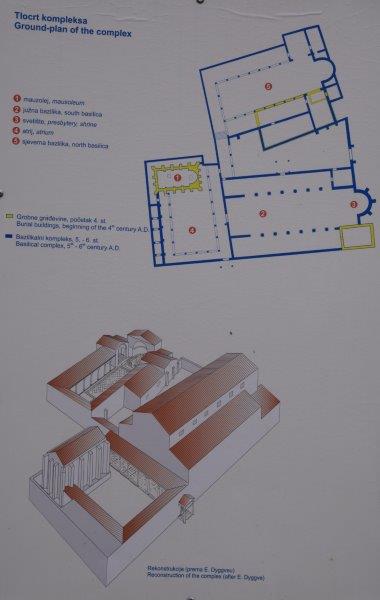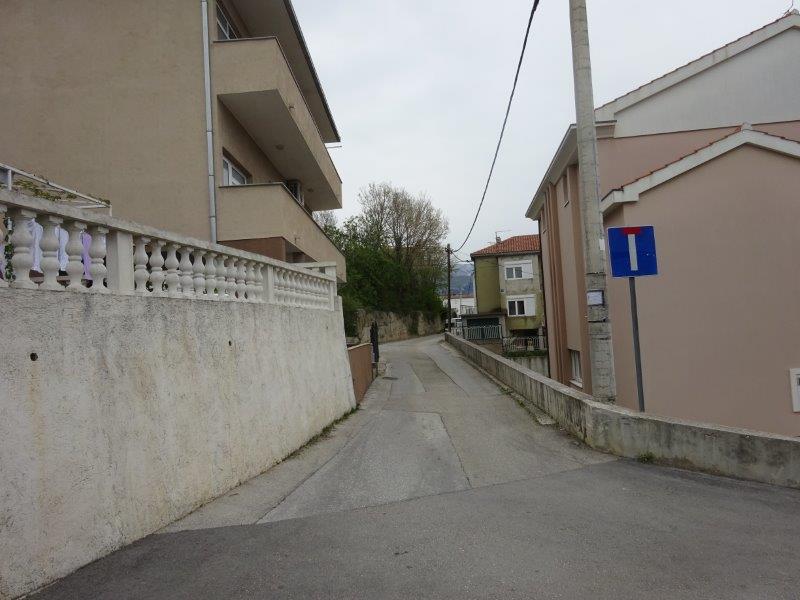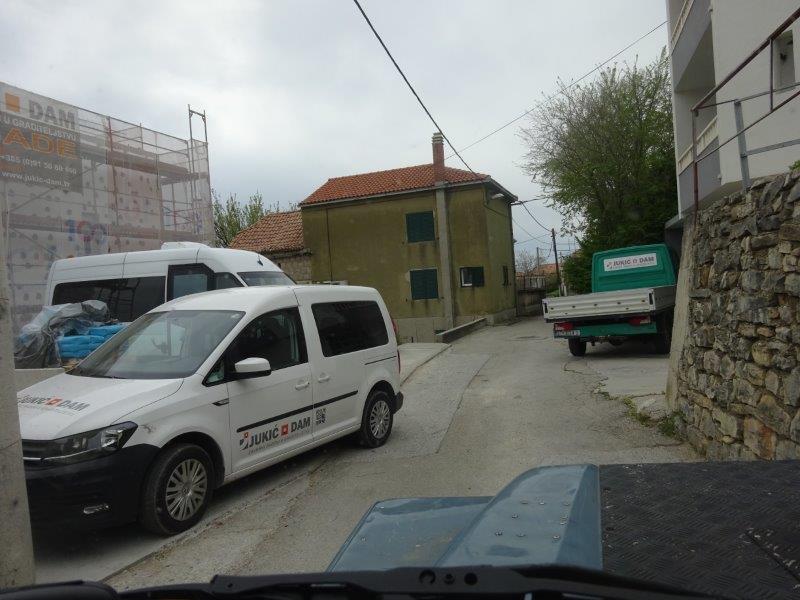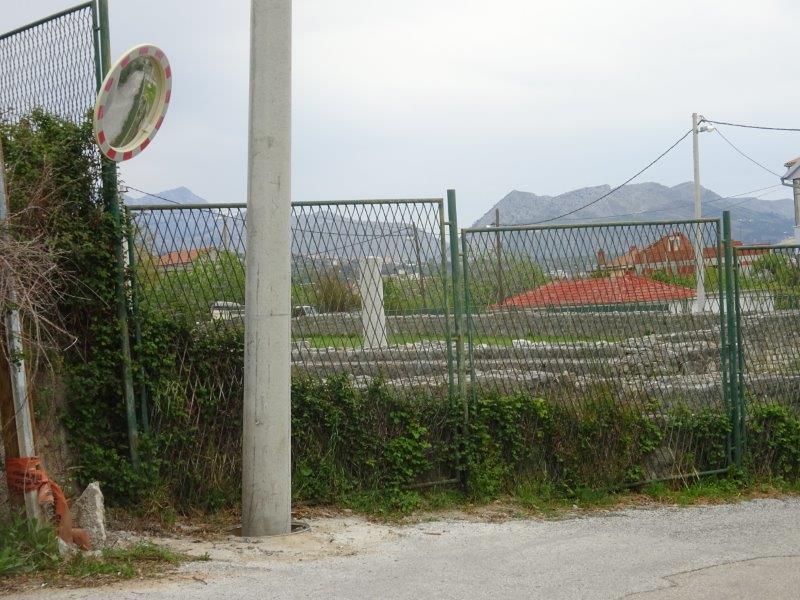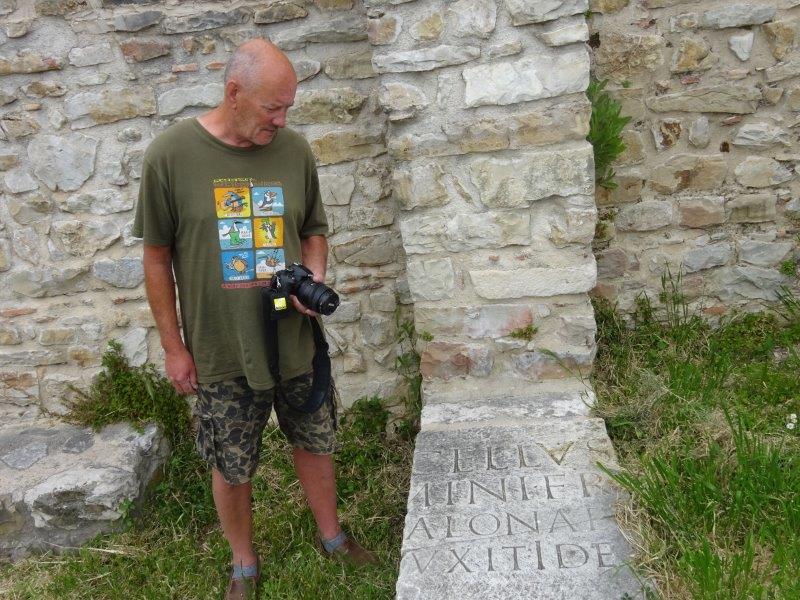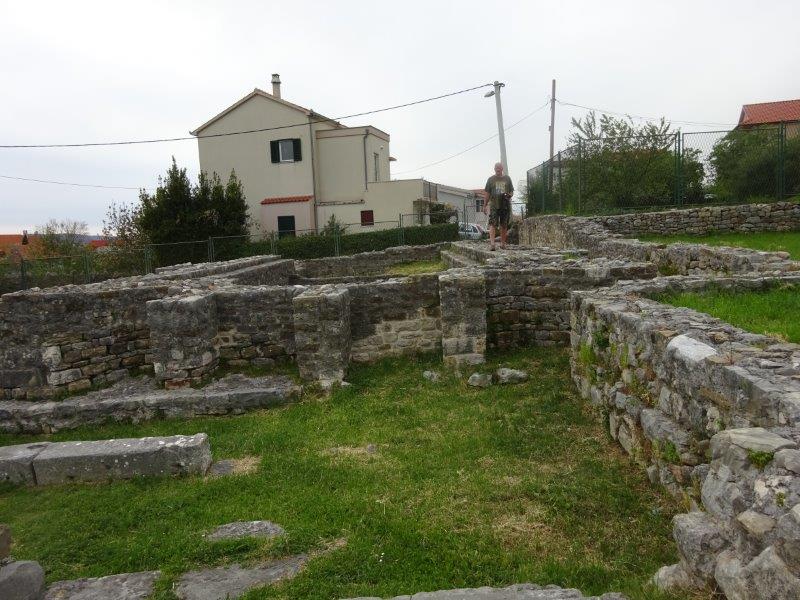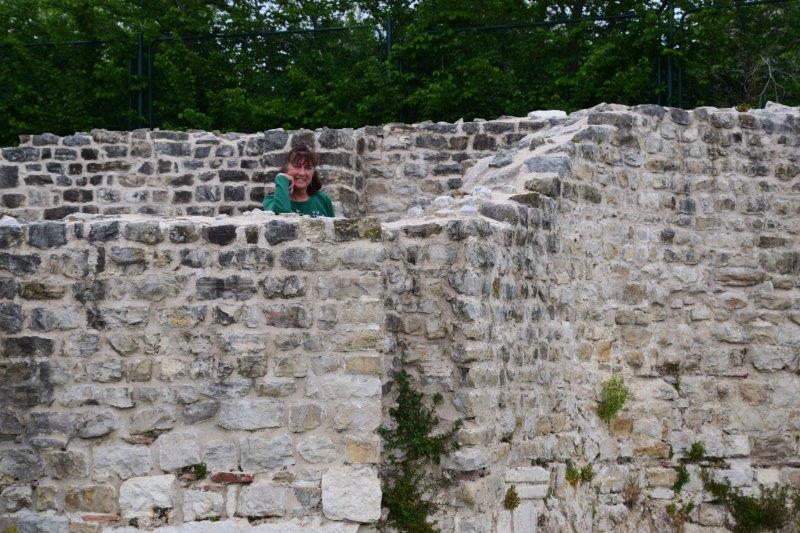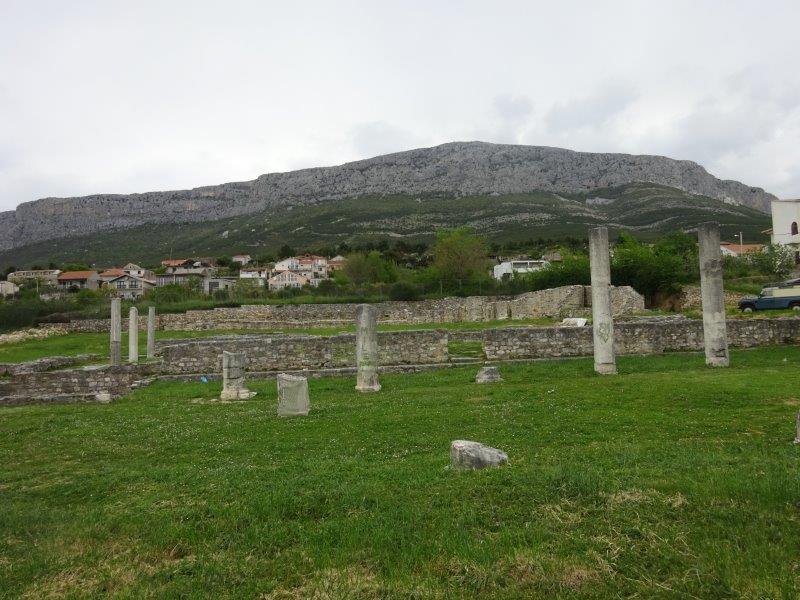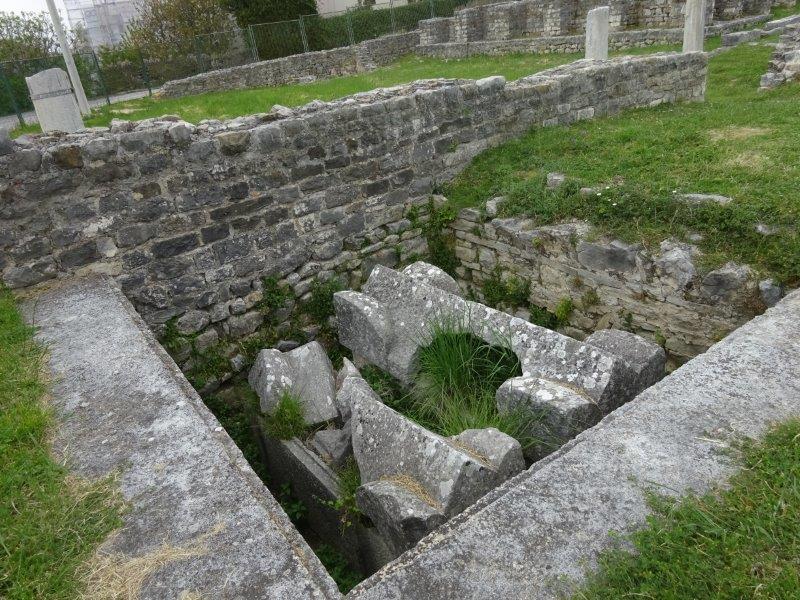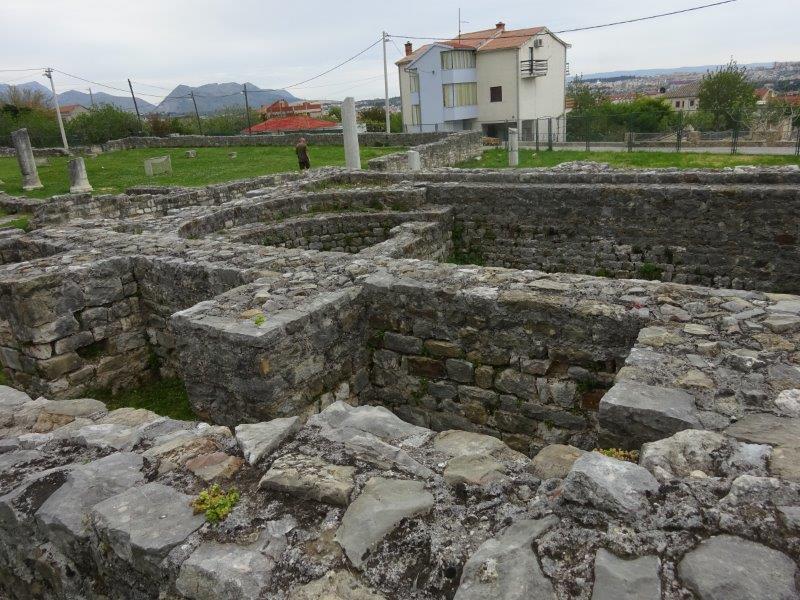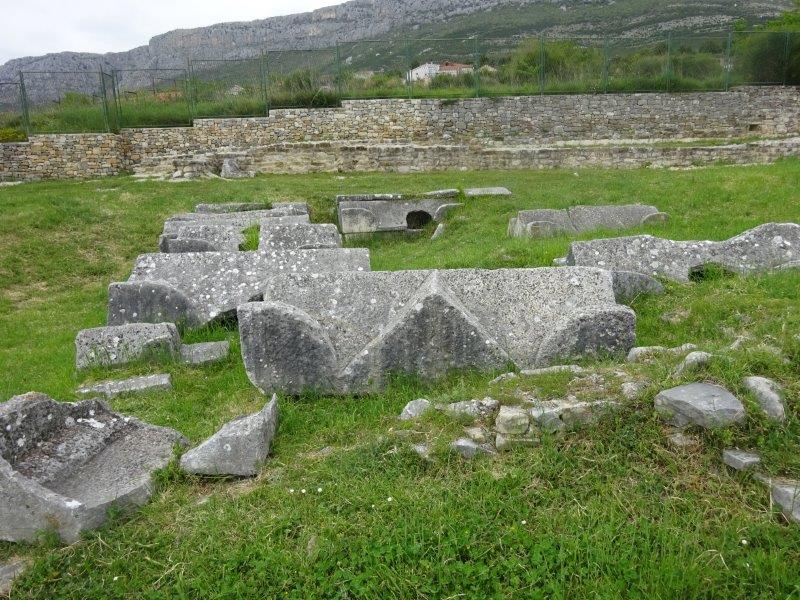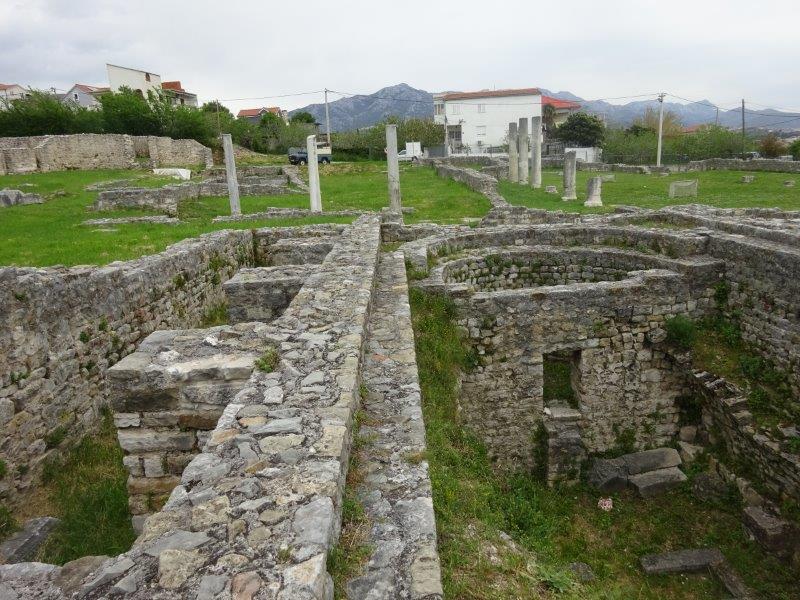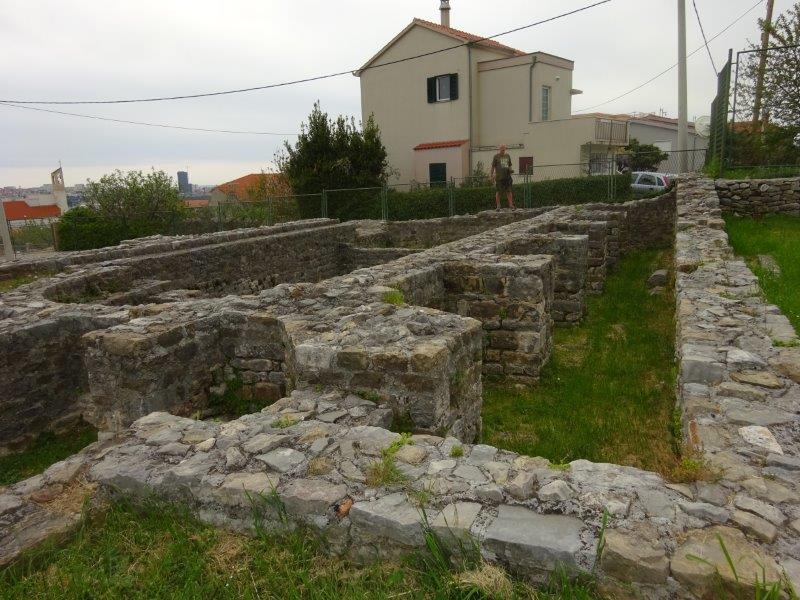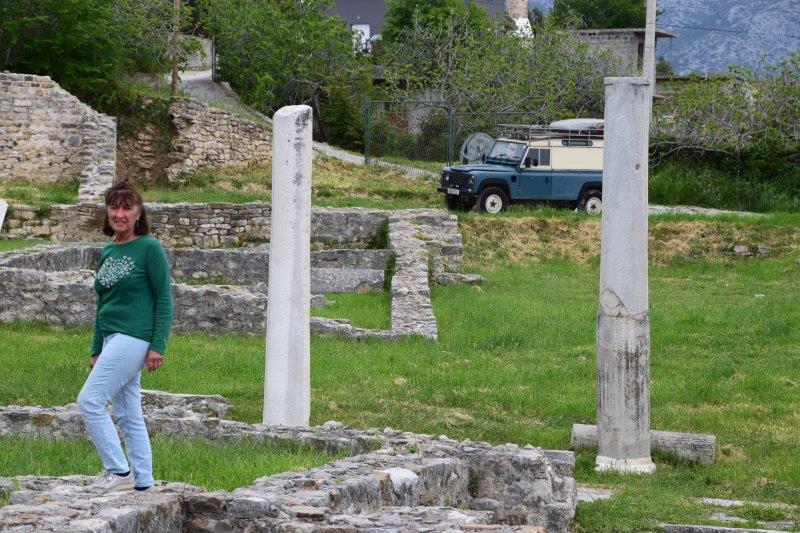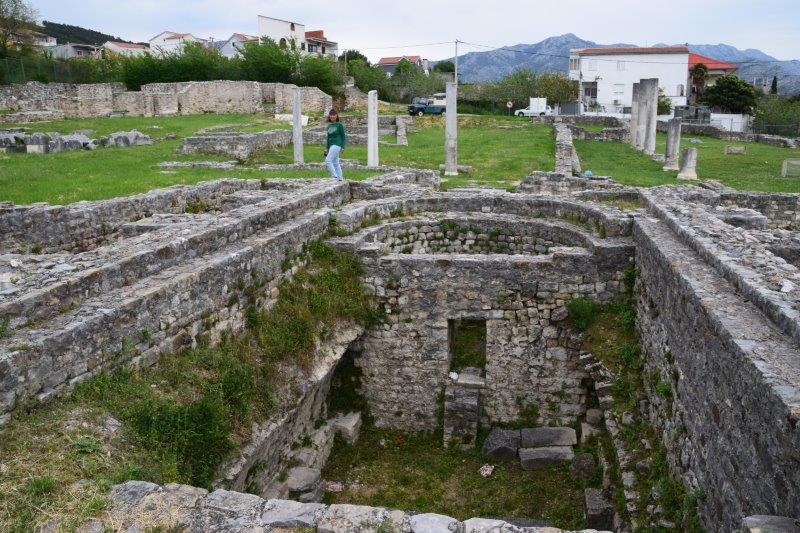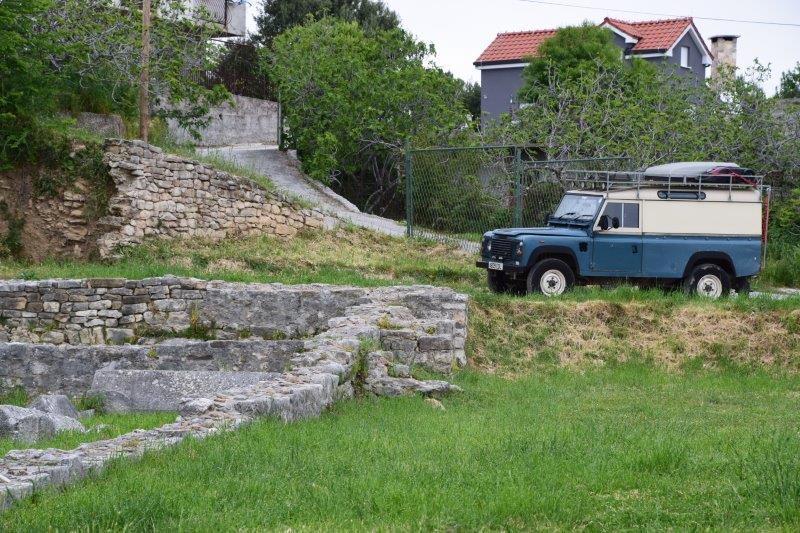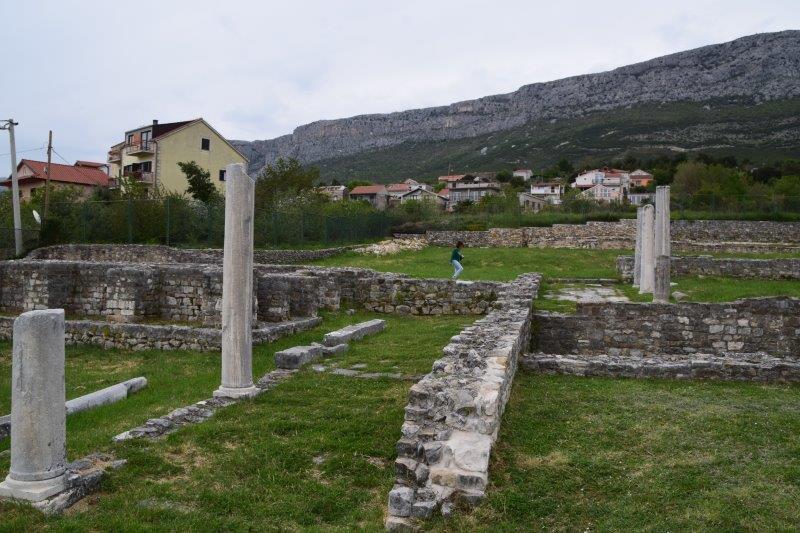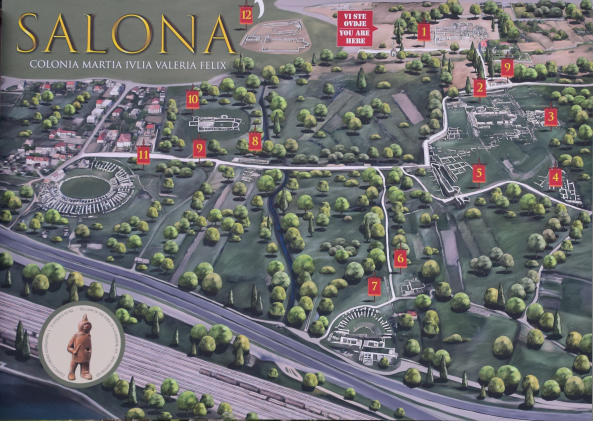
Quite a few must see tourist attractions around Split do not seem to be well publicised, so we were delighted to discover there is a HUGE Roman archaeological site called Salona, near Solin, just outside of Split and it was well worth visiting. Reading more, we discovered not only was Salona one of the largest cities of the Roman empire, but is now one of the largest Roman Empire archaeological sites in Europe which can be visited today. At its height its population may have reached 60,000 (Pompeii in comparison was only 11,500), making it the biggest town in the Western World at the time. I’ve tried to research the size of the area, but have been unsuccessful.
We were excited to read all of this, that it was on our doorstep and immediately put Salona on our ‘must do’ list. We read more about Salona in that it was a Roman colony where in the 1st and 2nd centuries AD they built a forum, amphitheatre, baths and town walls reinforced with at least ninety towers and became the richest, most populated city in the mid-Adriatic until the Avars and Slavs destroyed it in the 7th century.
Having decided to make a visit of this amazing attraction, only a few miles from the campsite, we arrived and parked up. In fact when I was writing this post up the originally, we discovered we had missed some bits out, so visited again.
We know that Roman Ruins resemble scattered stones, unless you are an archaeologist, so this post is probably more of a memoir for us, than an unintended ‘history’ lesson.
Studying the site on the noticeboard, we decided to walk around all of it, especially the second time and began with the Monastery and Museum.
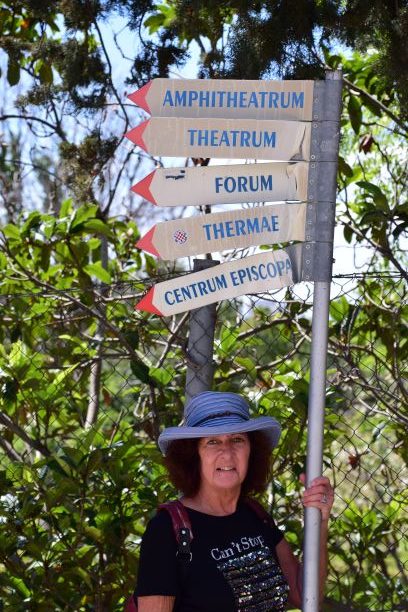
- Early Christian Basilica and Cemetery / Tomb of Domnio, Bishop and Martyr
- Episcopal Centre
- Large City Thermae
- Five Bridges
- Porta Caesarea
- Forum and Capitolium Temple
- Theatre and Temple
- Sixteen Sarcophagi Cemetery
- City Walls
- Five Martyrs Basilica
- Amphitheatre
- Mausoleum, Early Christian Basilicas
The Manastirine was right in front of us as we walked through the gate, with the Museum House next. Visiting the Museum was interesting; only two rooms, the ticket office and souvenir shop to the right, one museum room to the left . We came to the conclusion if you walked passed it then you didn’t need a ticket, as was our experience the first visit. However, if you walked into it then you could view the shop, the Tusculum, buy a ticket, at the equivalent of £4 each and with Stella allowed on the grounds, well worth it. The garden where seating areas had been created from stone and marble finds from the excavations must be even prettier in their garden surroundings in the height of summer when everything is in full bloom.
The Episcopal Centre and City Baths were next and we took images with both the coastline and mountains in the background. You’ll notice from the images below the high rise residential tower blocks of Split by the coast line to one side and the mountains to the other side.
Some images we took of Caesar’s Gate and the great Wall.
We continued walking towards the Amphitheatre.
Following the sign to the Theatrum and Forum, which we missed the first time down a path, which doesn’t look like a path at all as it’s strewn with broken bits of Roman stones. The Forum must have originally been huge, but unfortunately, not a lot is left and certainly nothing to take photos of. The Theatre and Five Bridges have survived minimally better. This bit is adjacent to the main road, and I have to say is a lot more recognisable from the road side.
Finally we get to the most exciting recognisable find, the Amphitheatre, which in its time accommodated around 20,000 spectators. You can see that many residents have this on their doorstep, or backdrop to their gardens.
We’d spent several enjoyable hours walking around, over our two visits, and when we decided to leave on the second occasions there was just one more site to visit which was the Marusinac, only a couple of kilometres’ drive away and although we were completly Roman Ruined out we felt it a shame if we didn’t make the effort. We followed the brown museum signs, turned right into the small village and couldn’t see any more brown signs. The sat nav said to make a right turn, but the road sign said dead end and the road was very narrow. We gingerly made our way, saw a mirror on a corner and there it was. Hidden in a residential area.
Well, we did it. We visited Salona the largest Roman Empire archaeological site in Europe. All three of us enjoyed the walks and discoveries and looking forward to quenching our thirsts.
